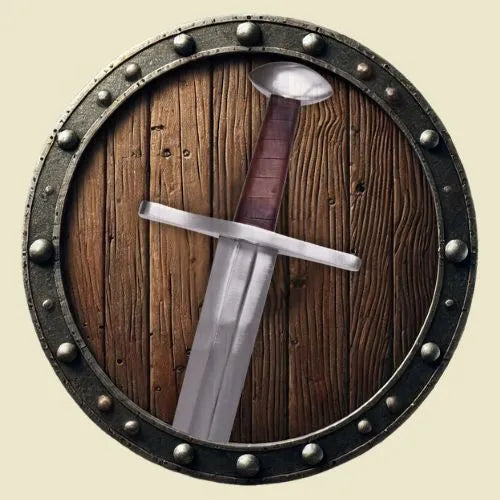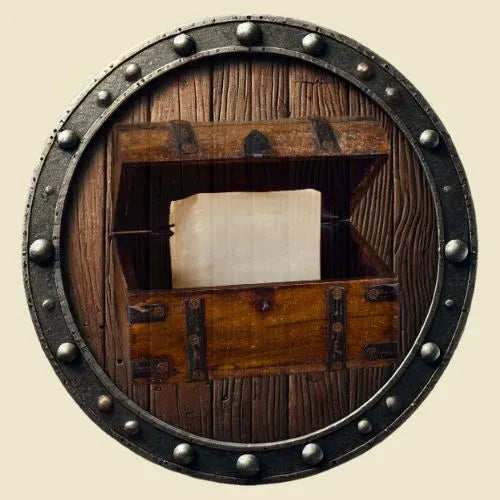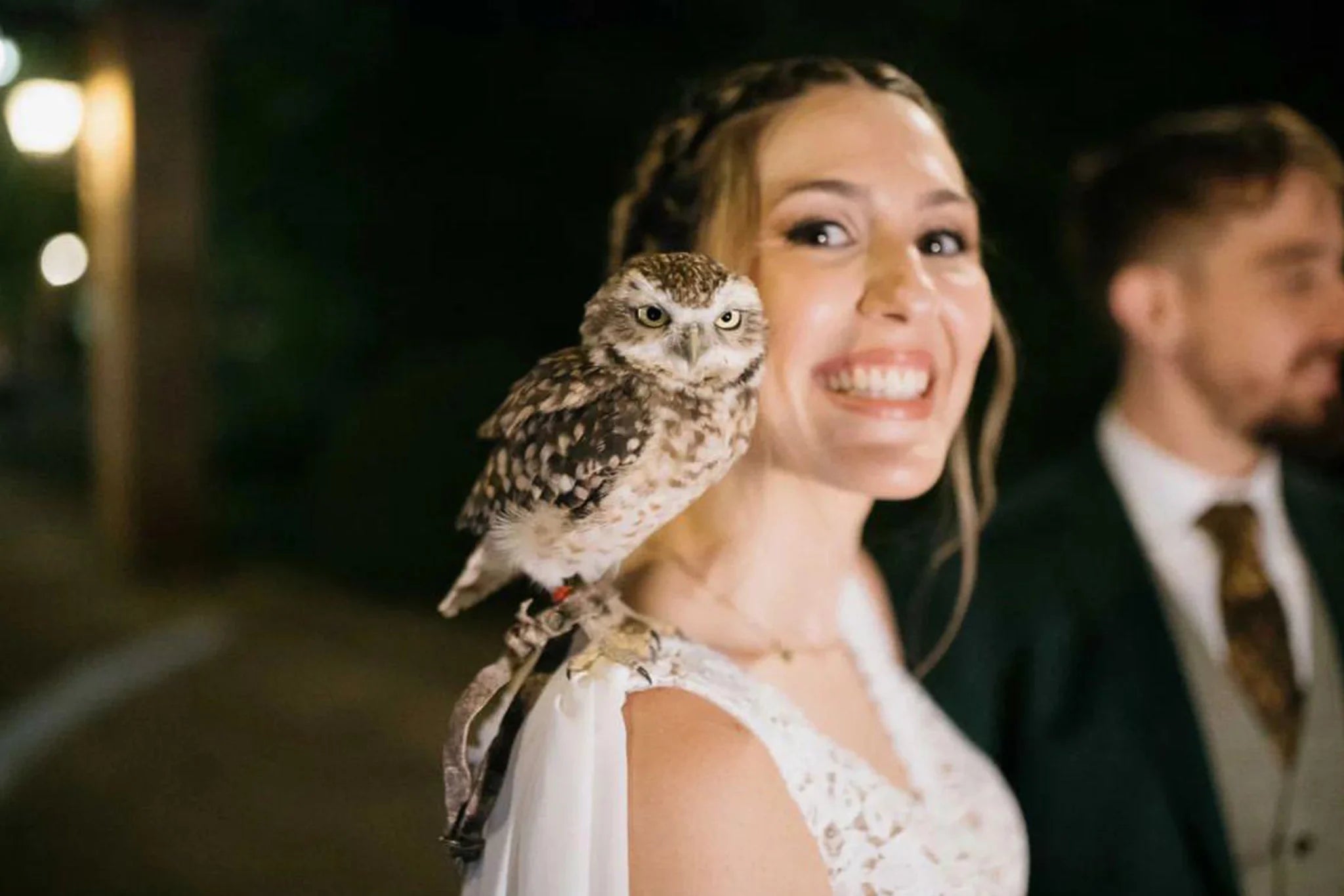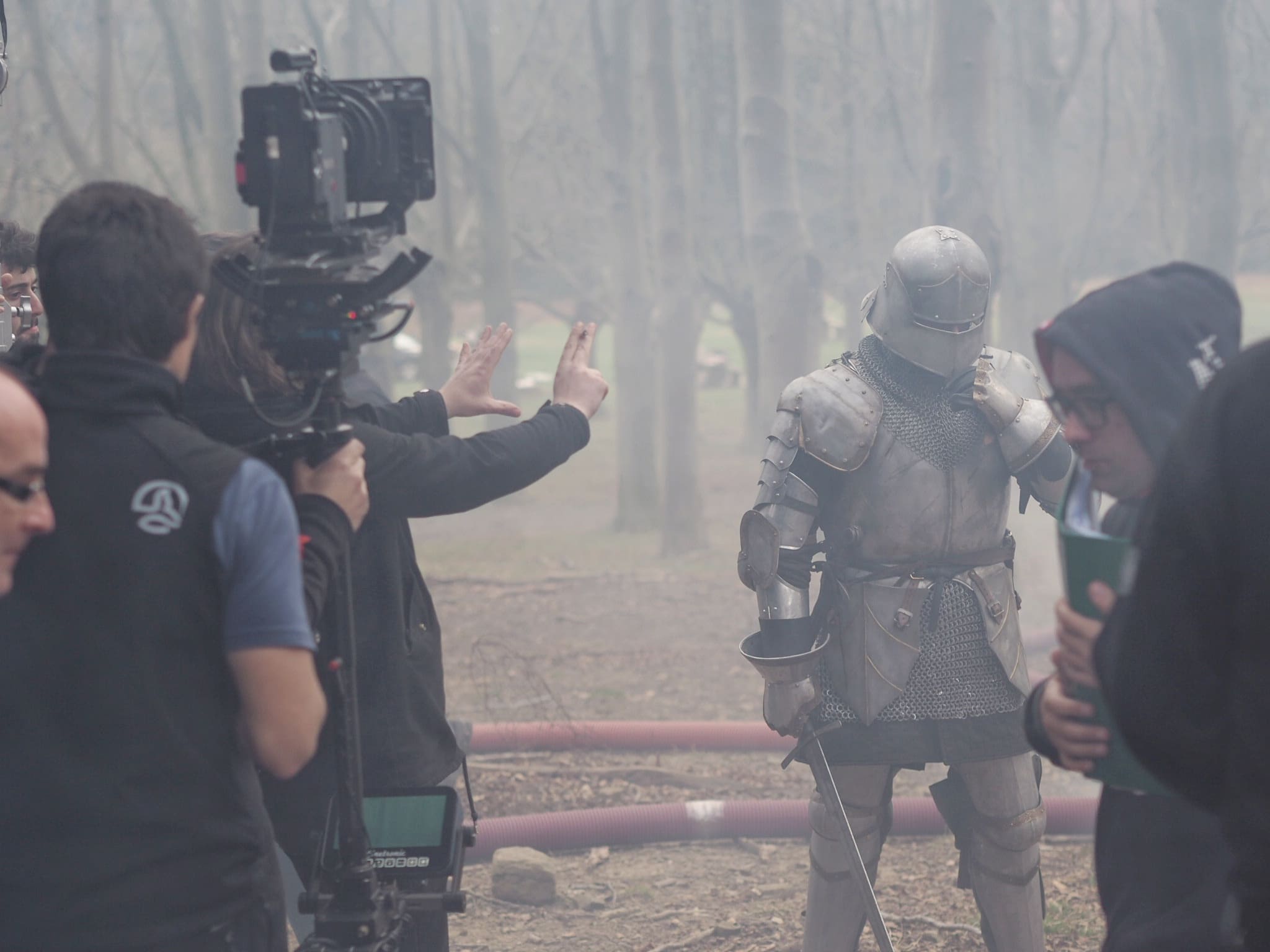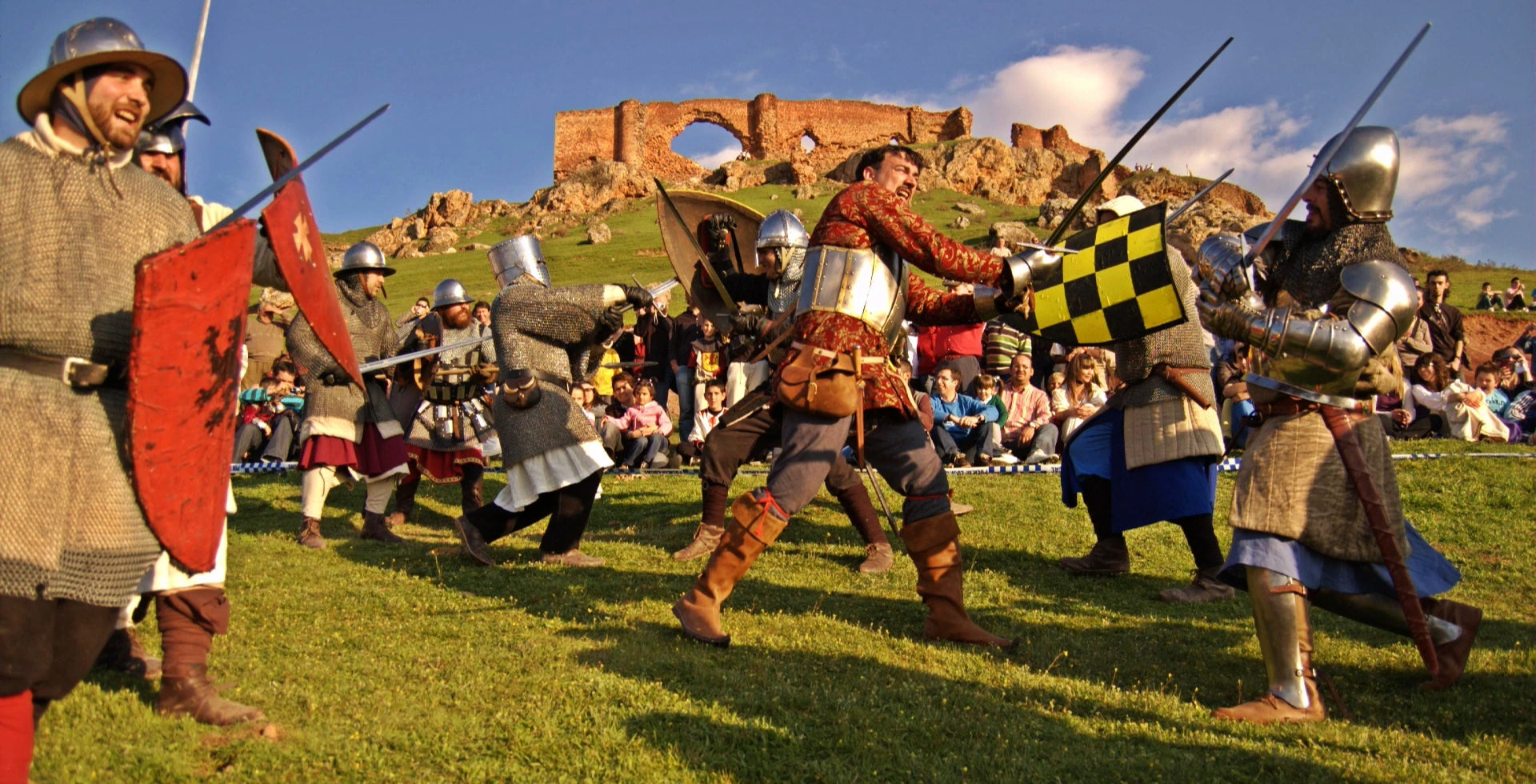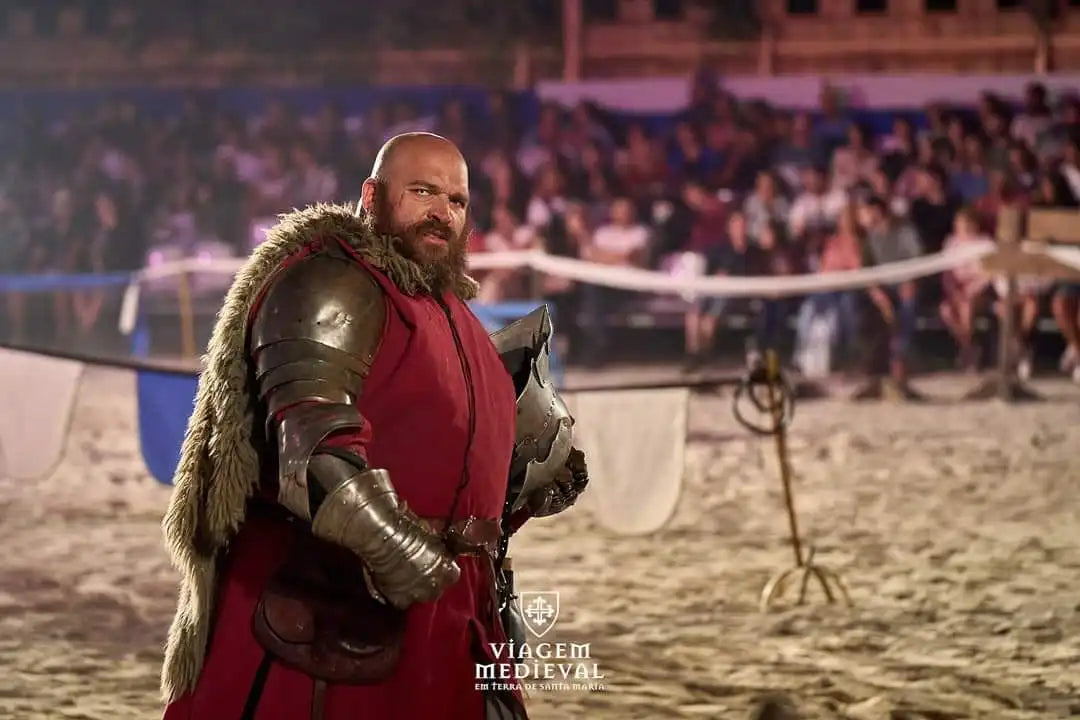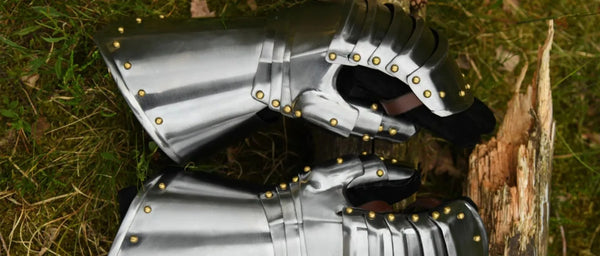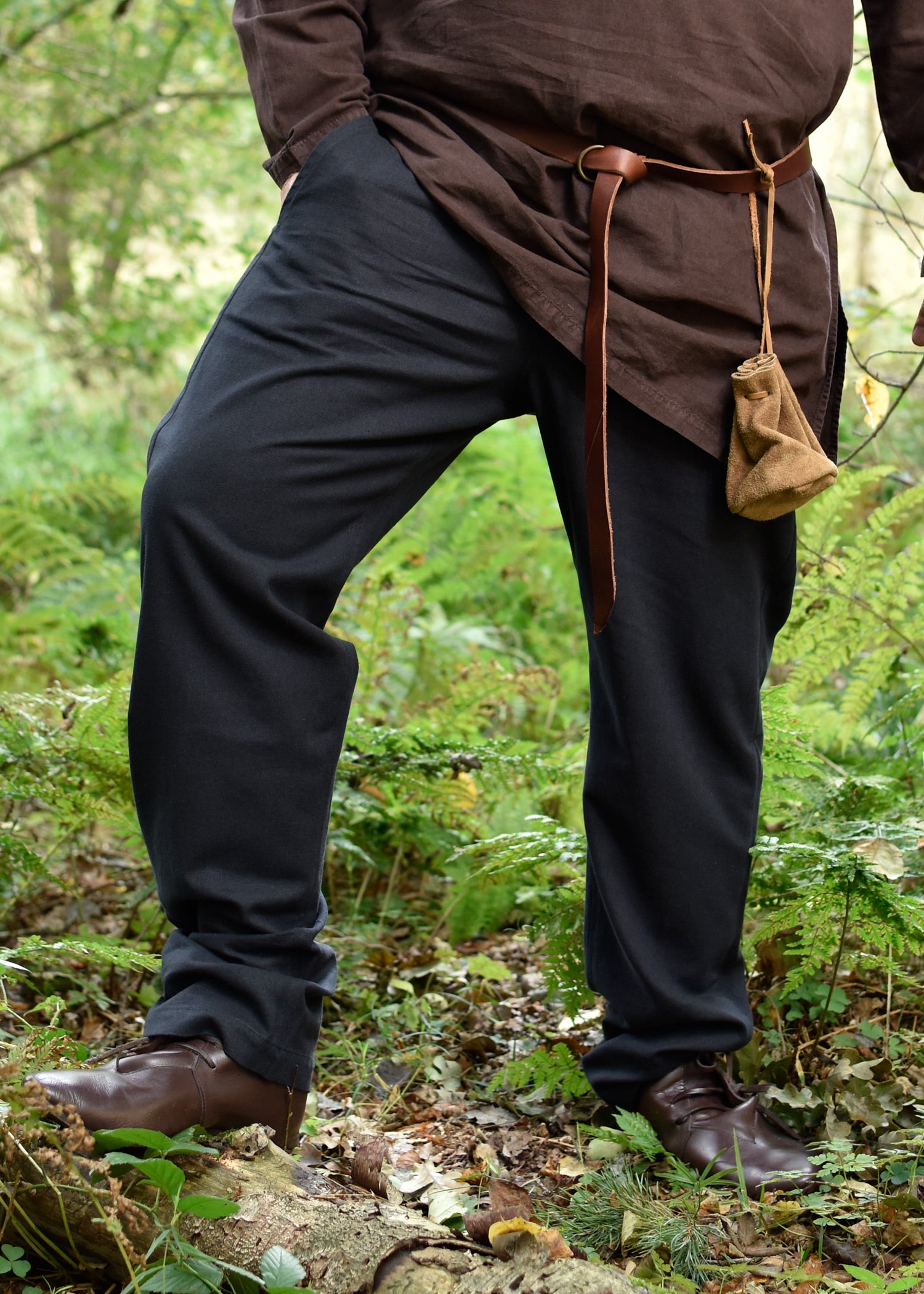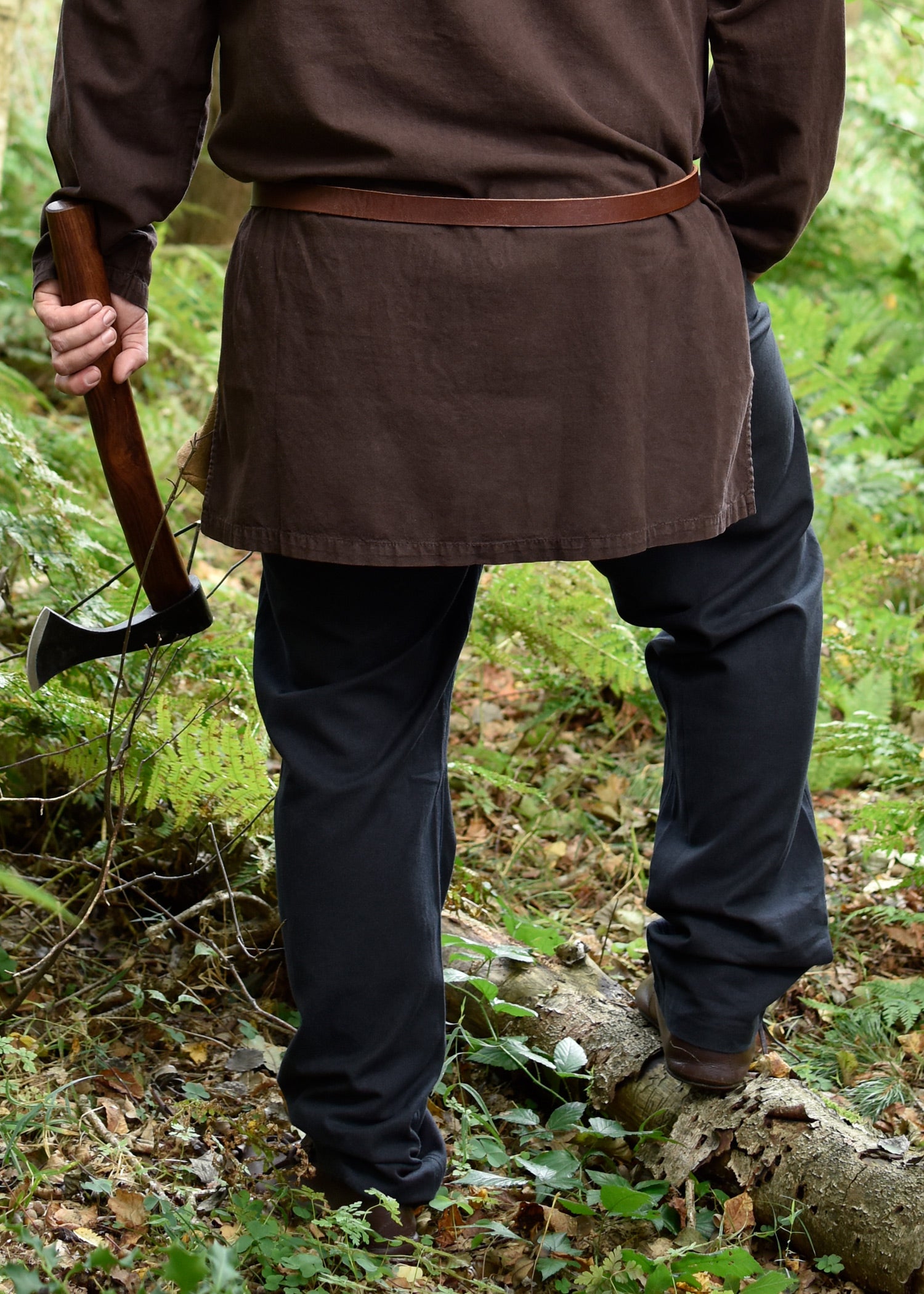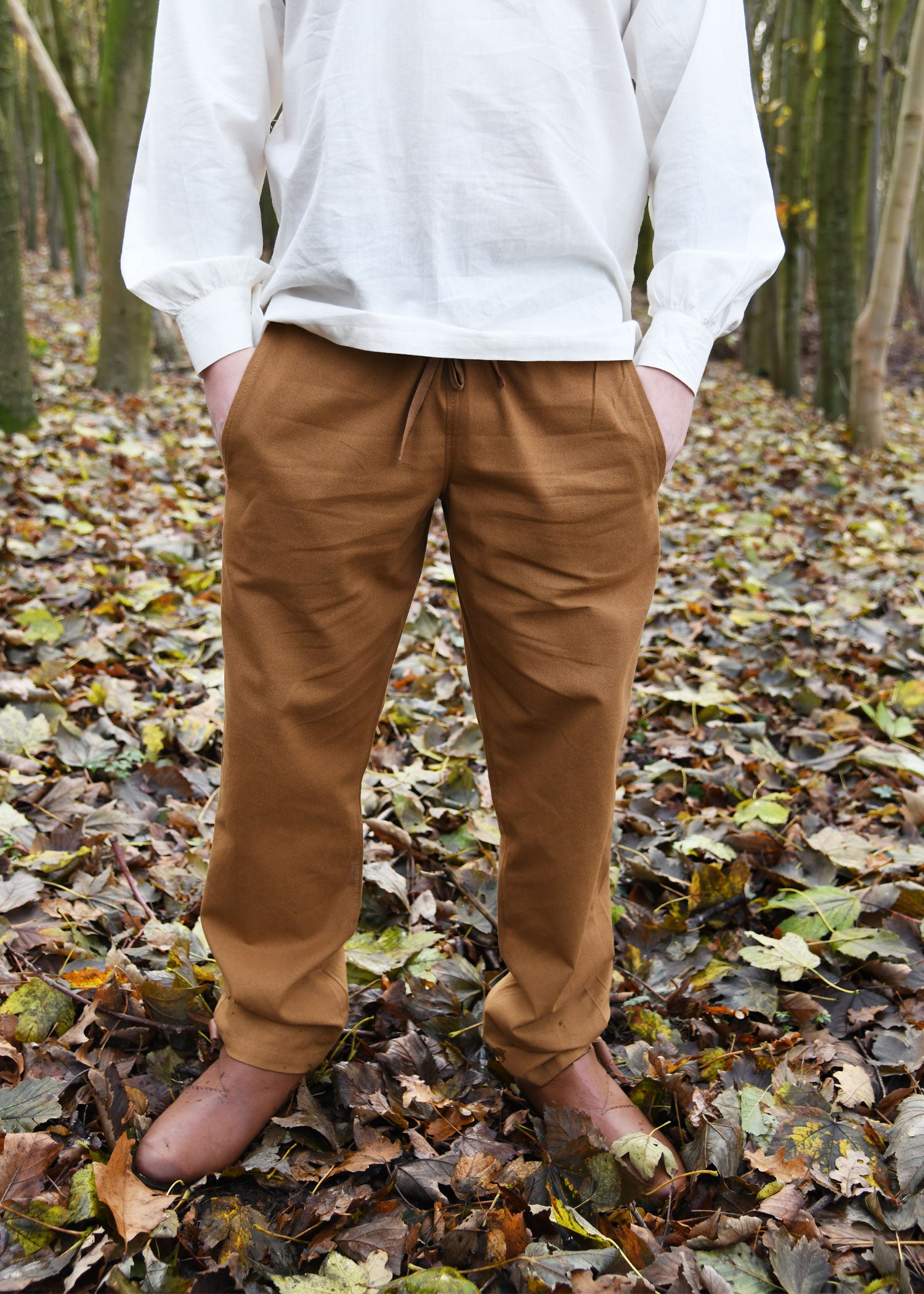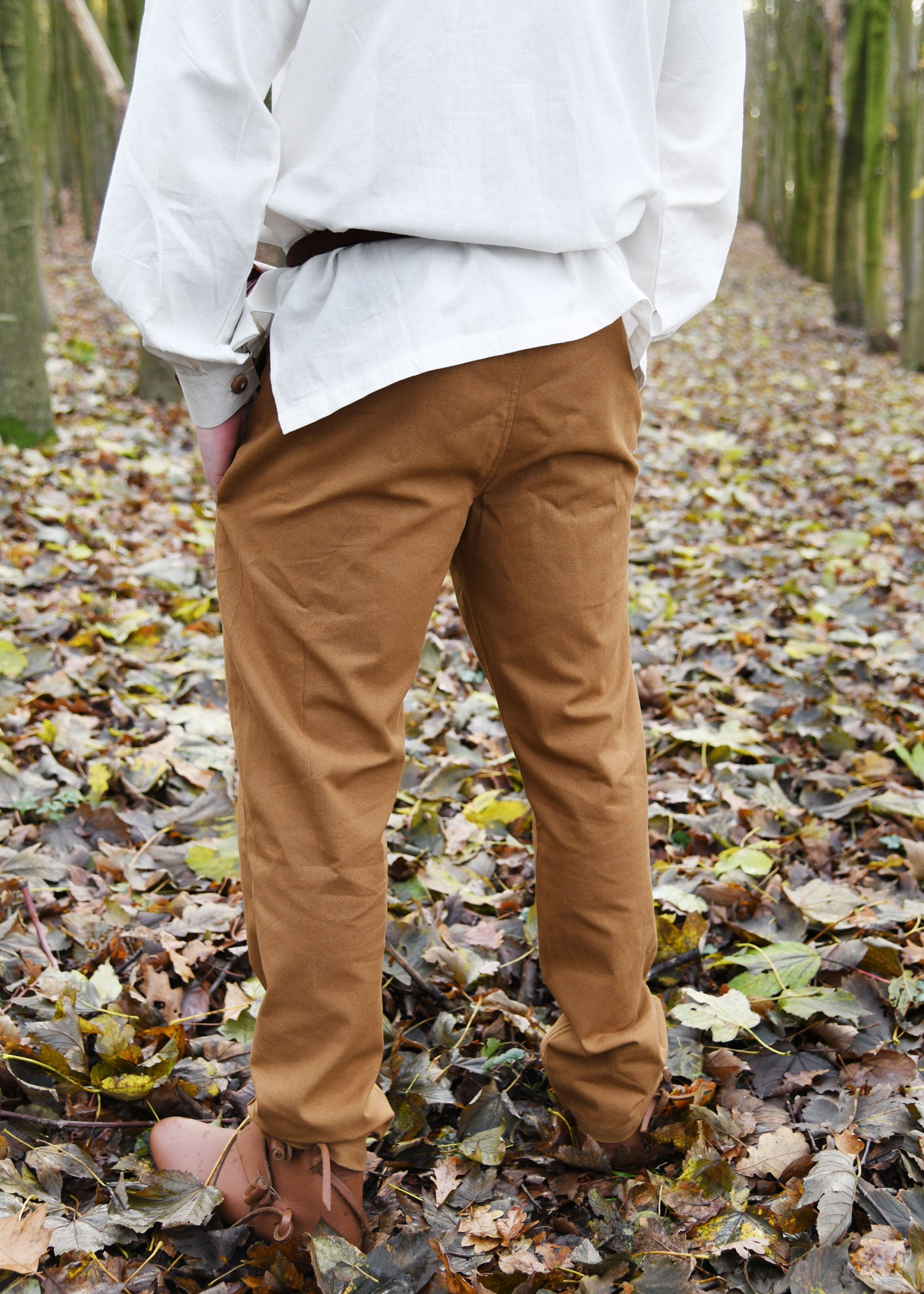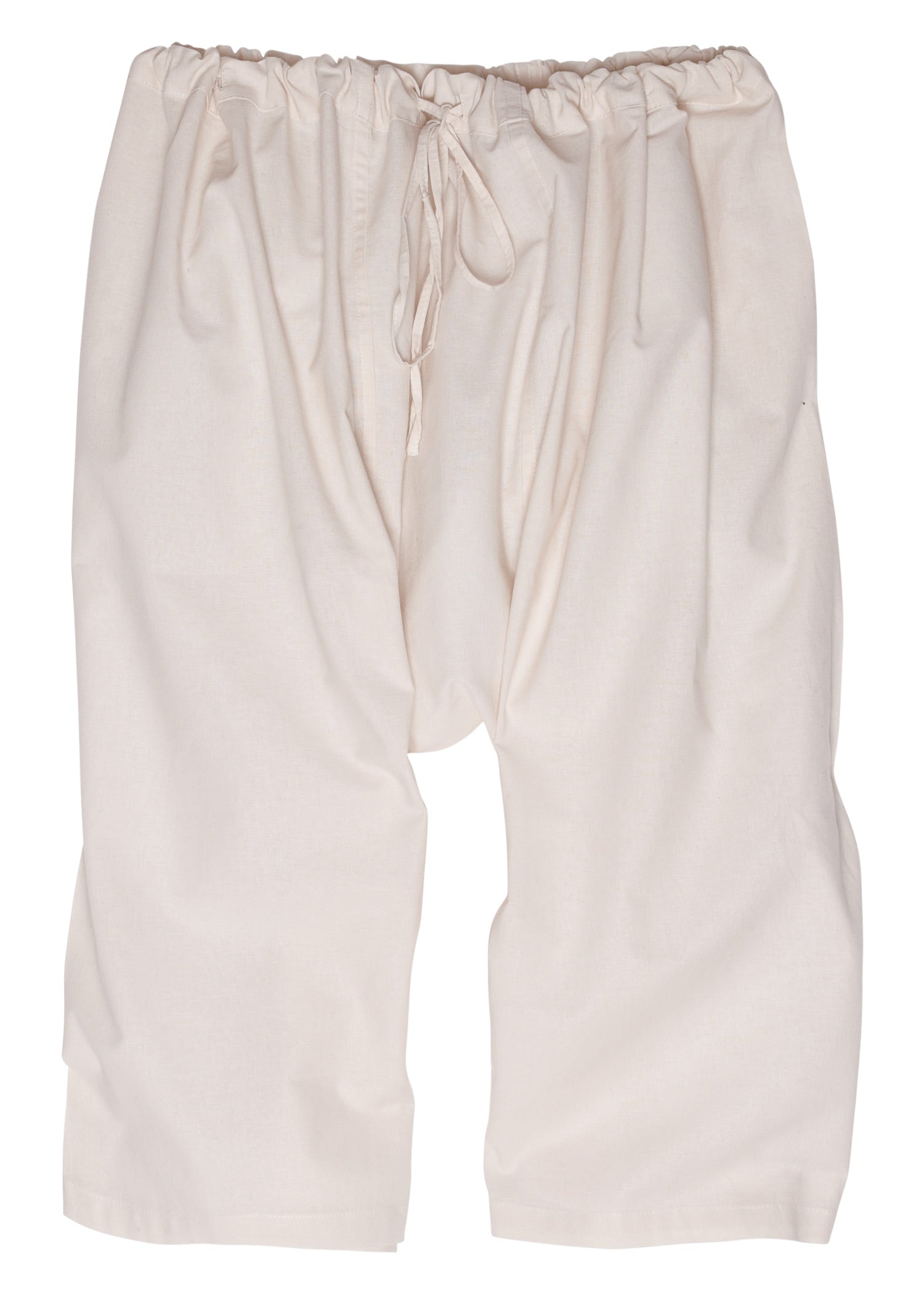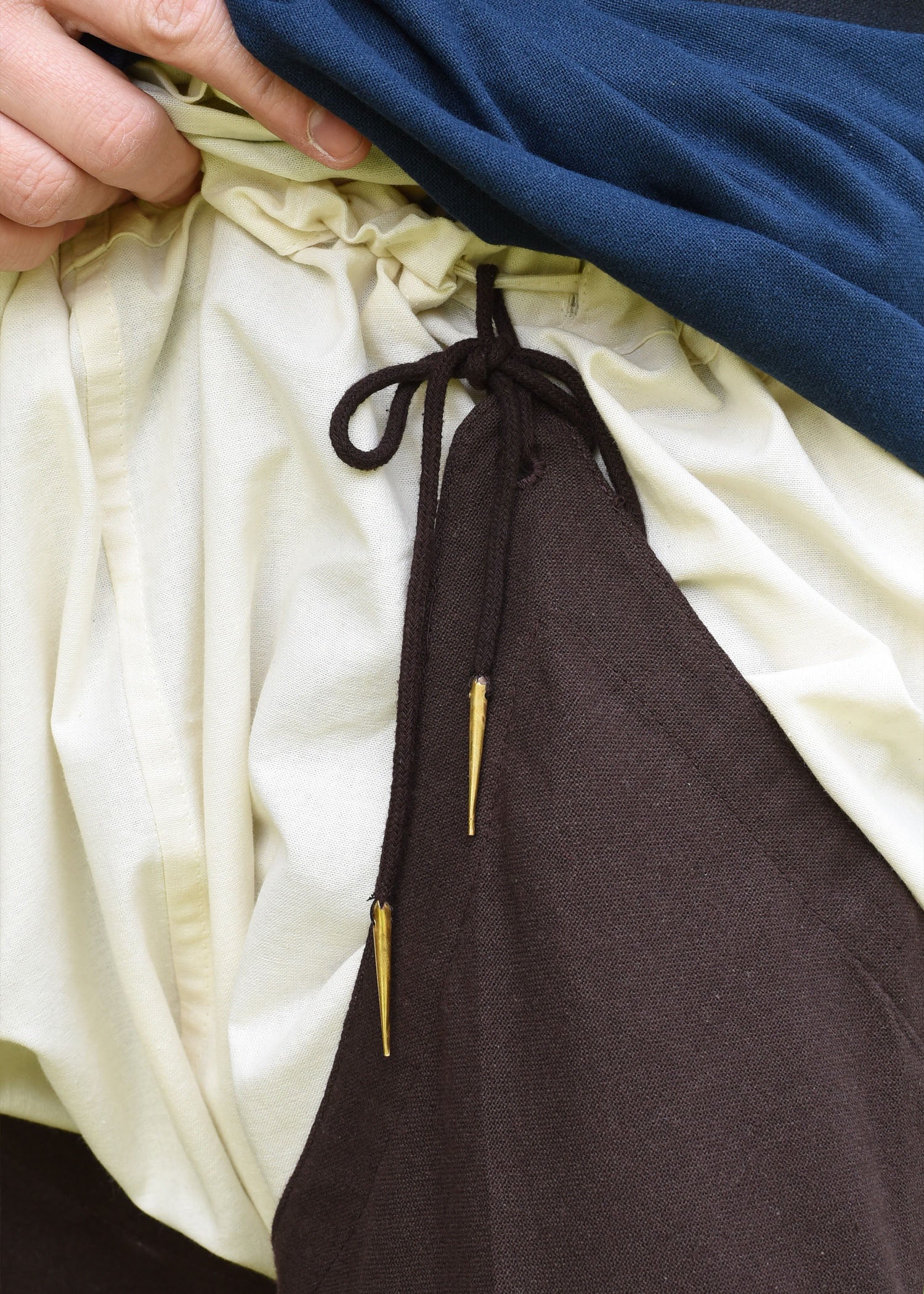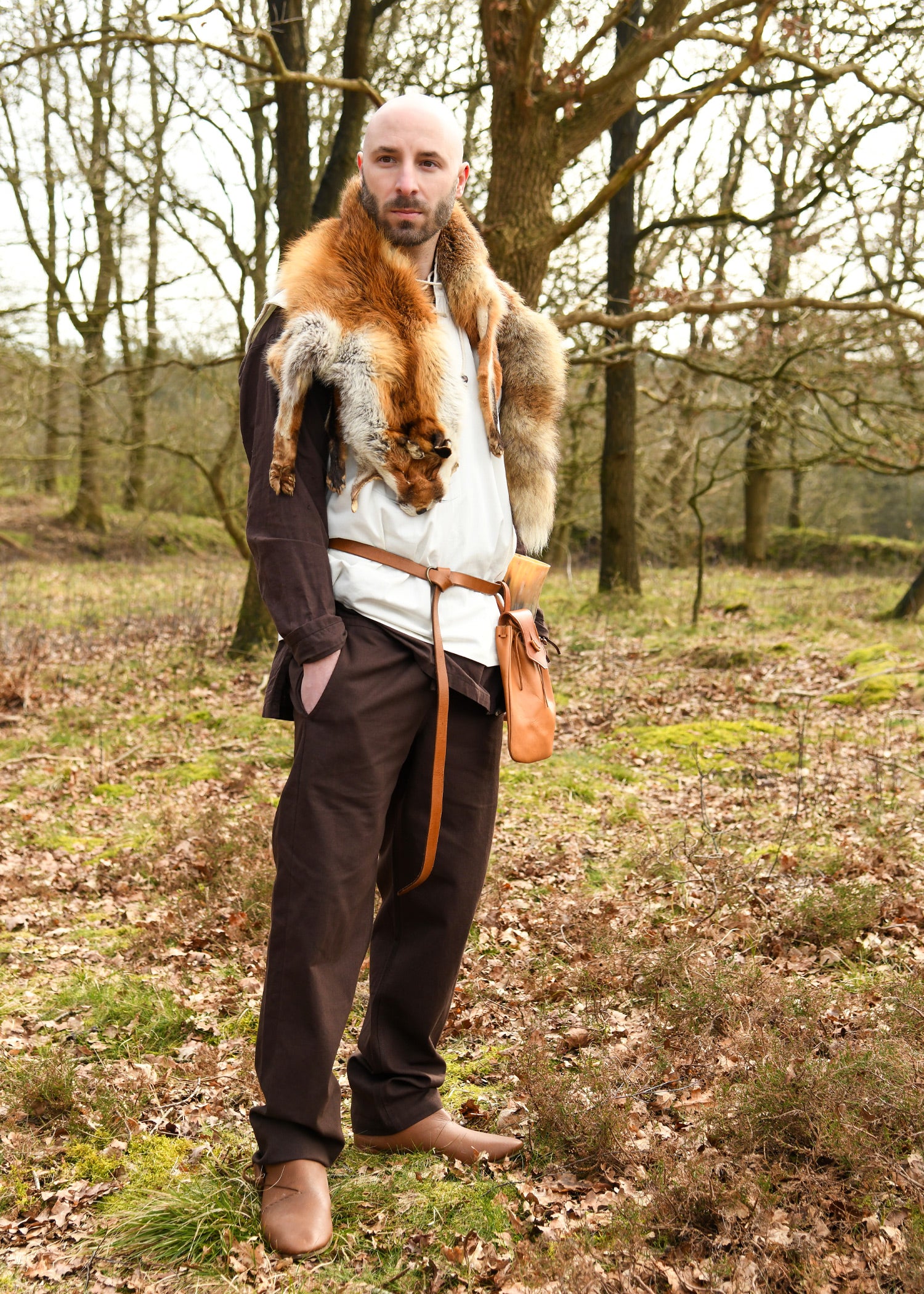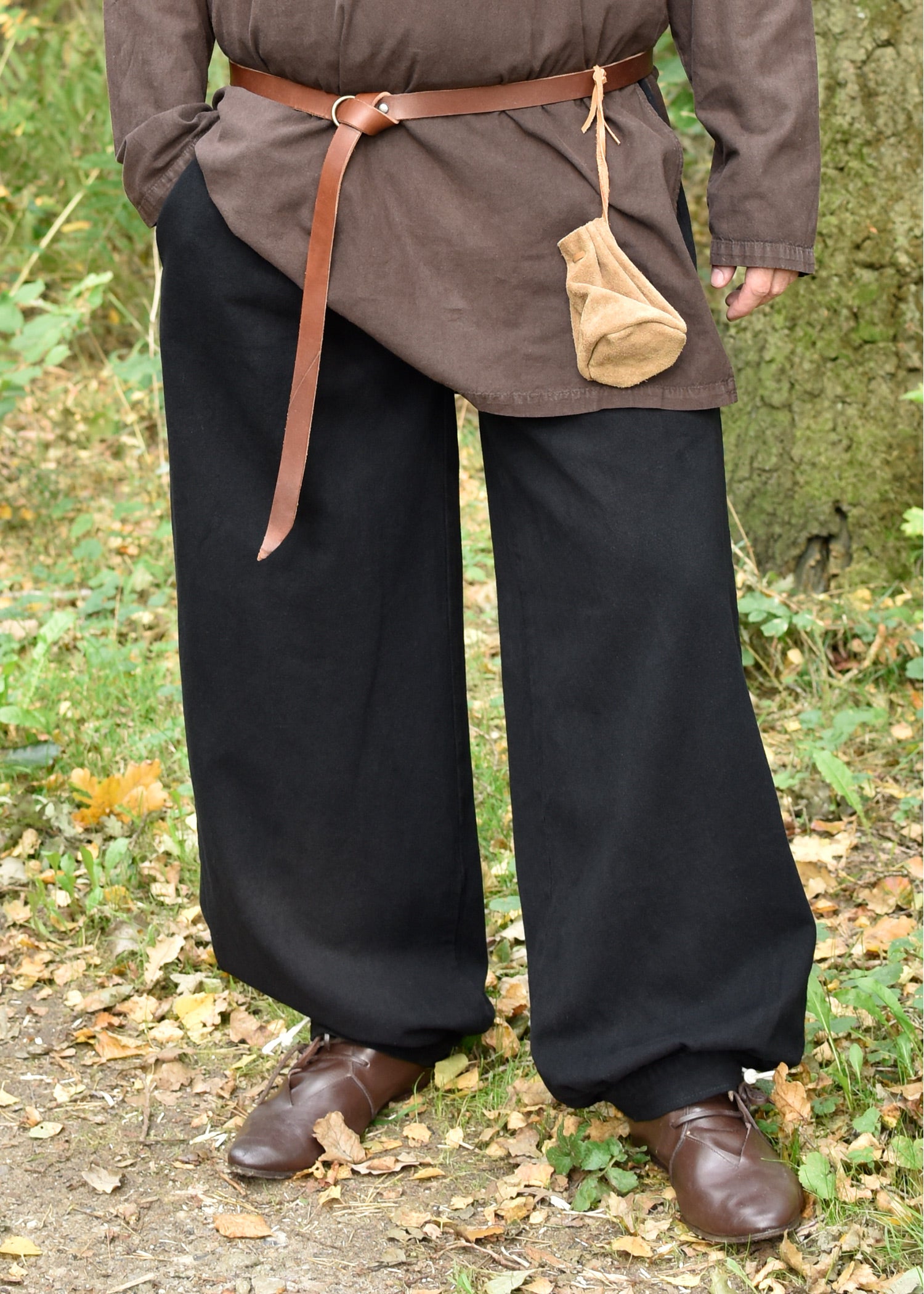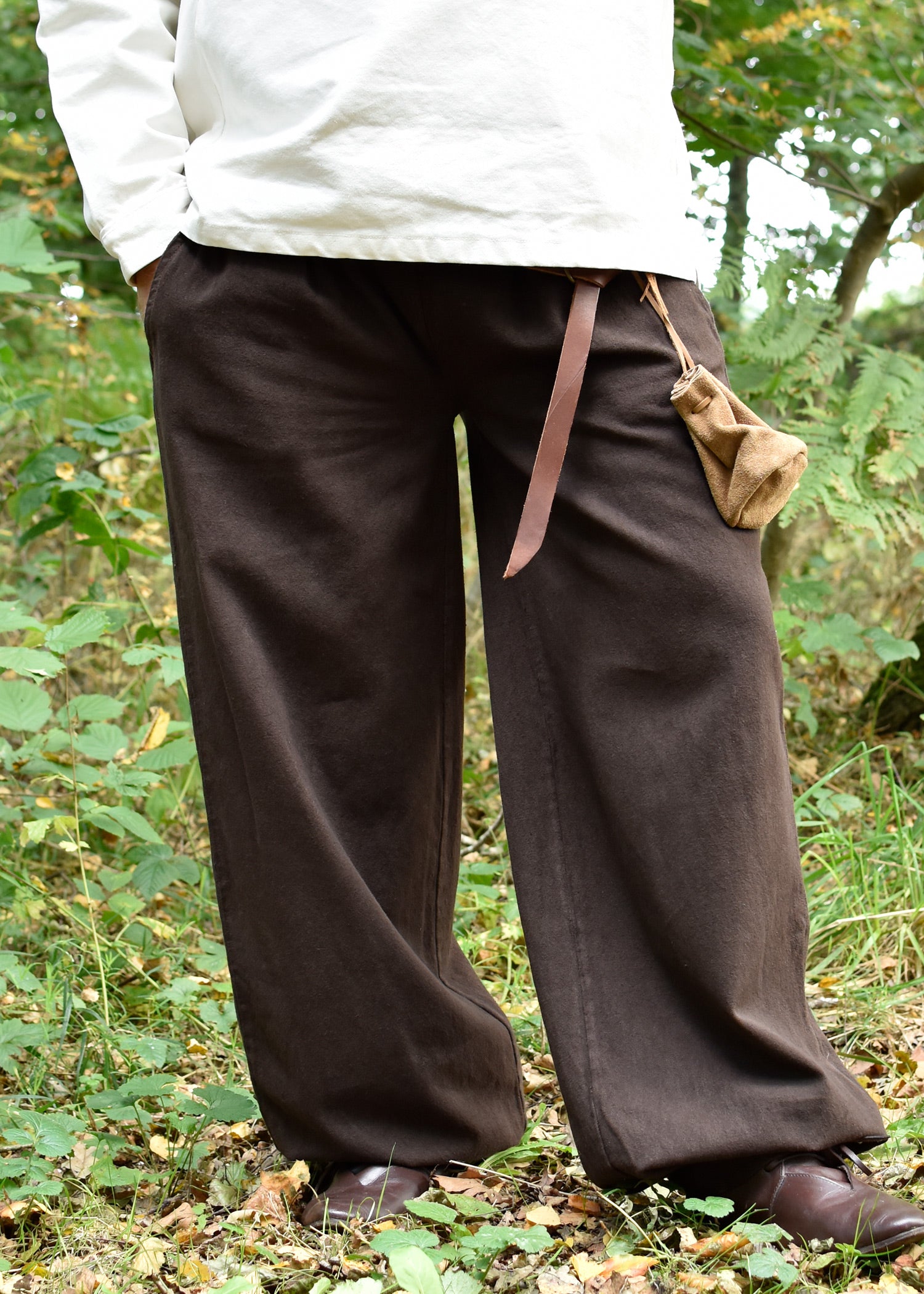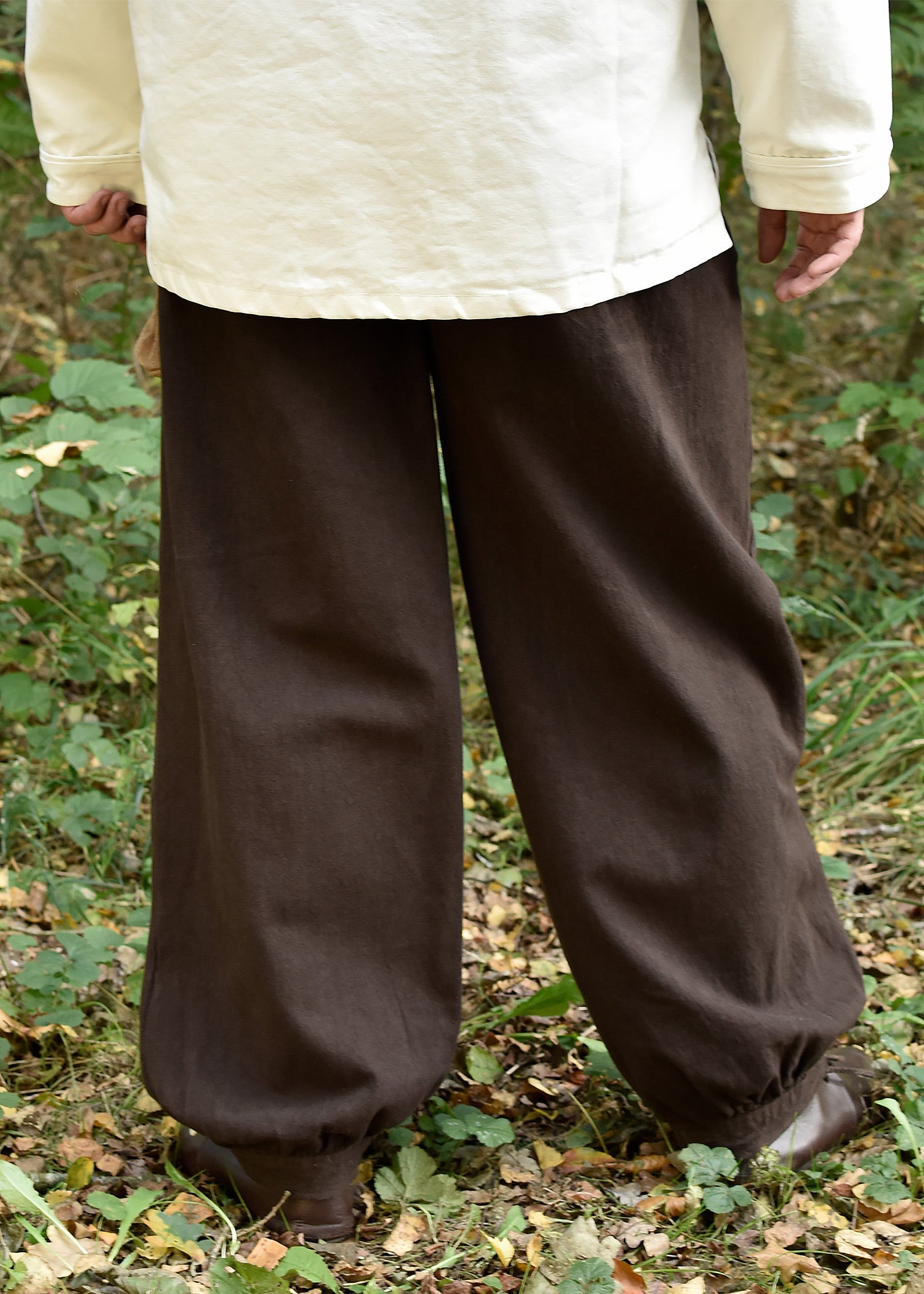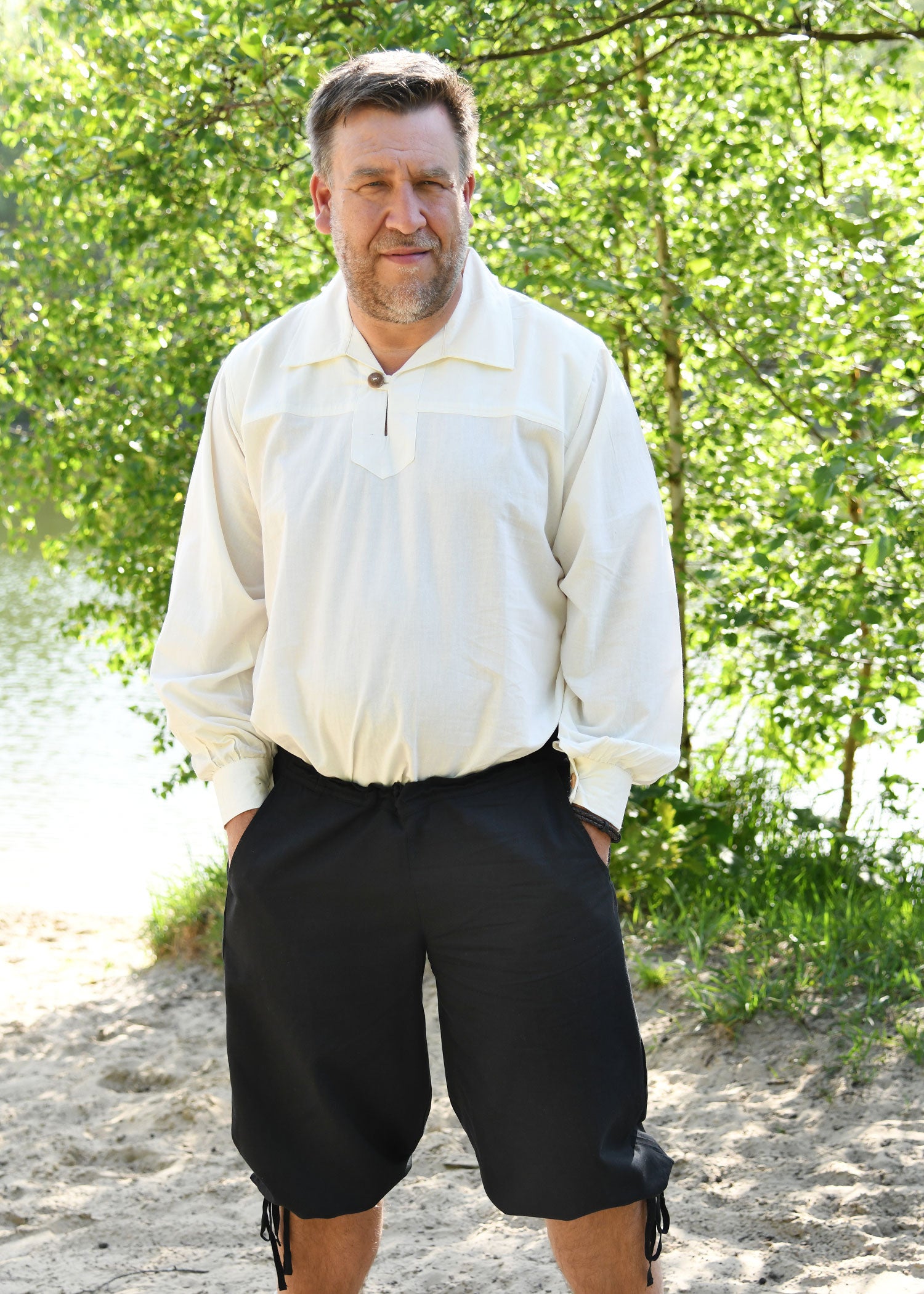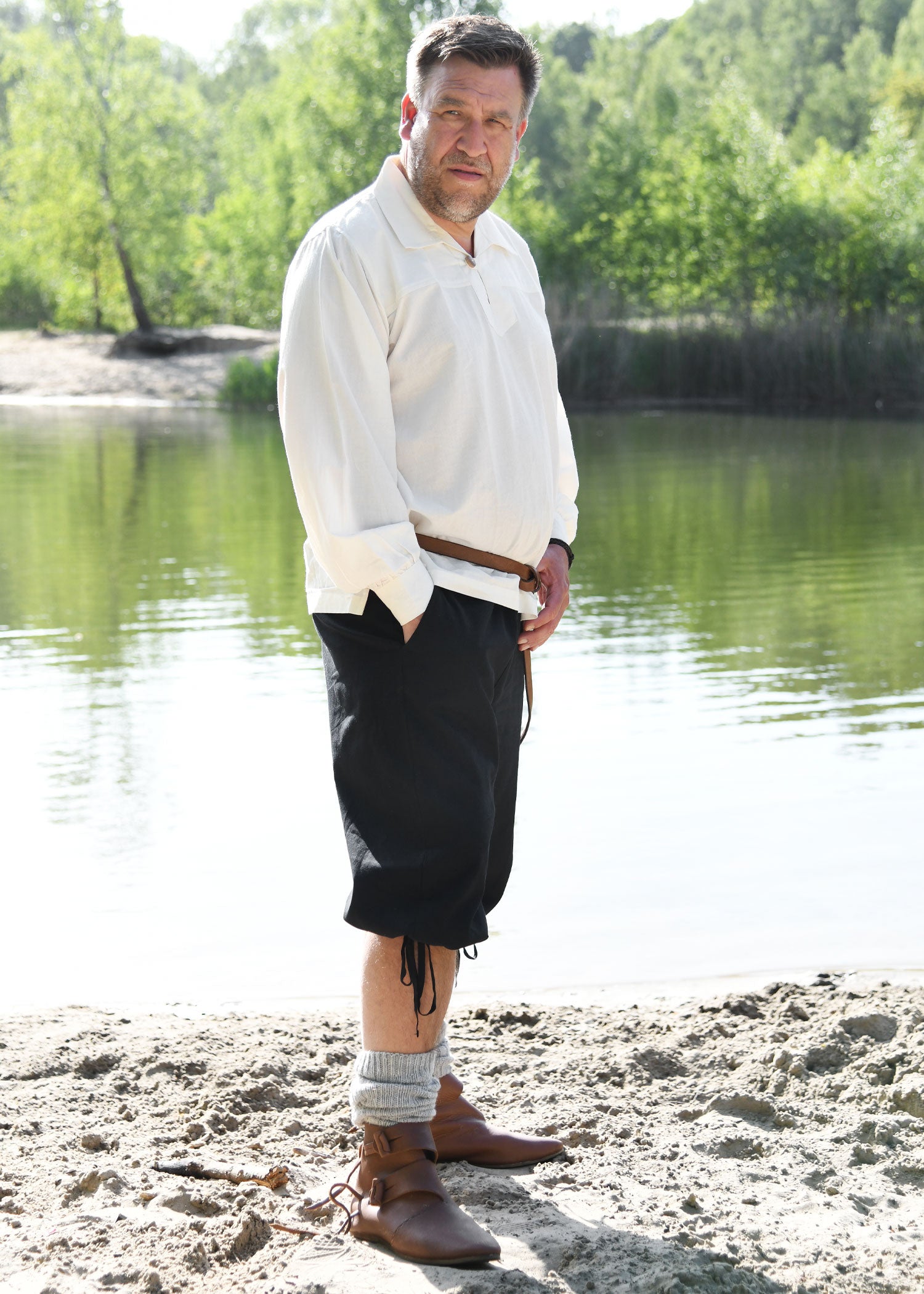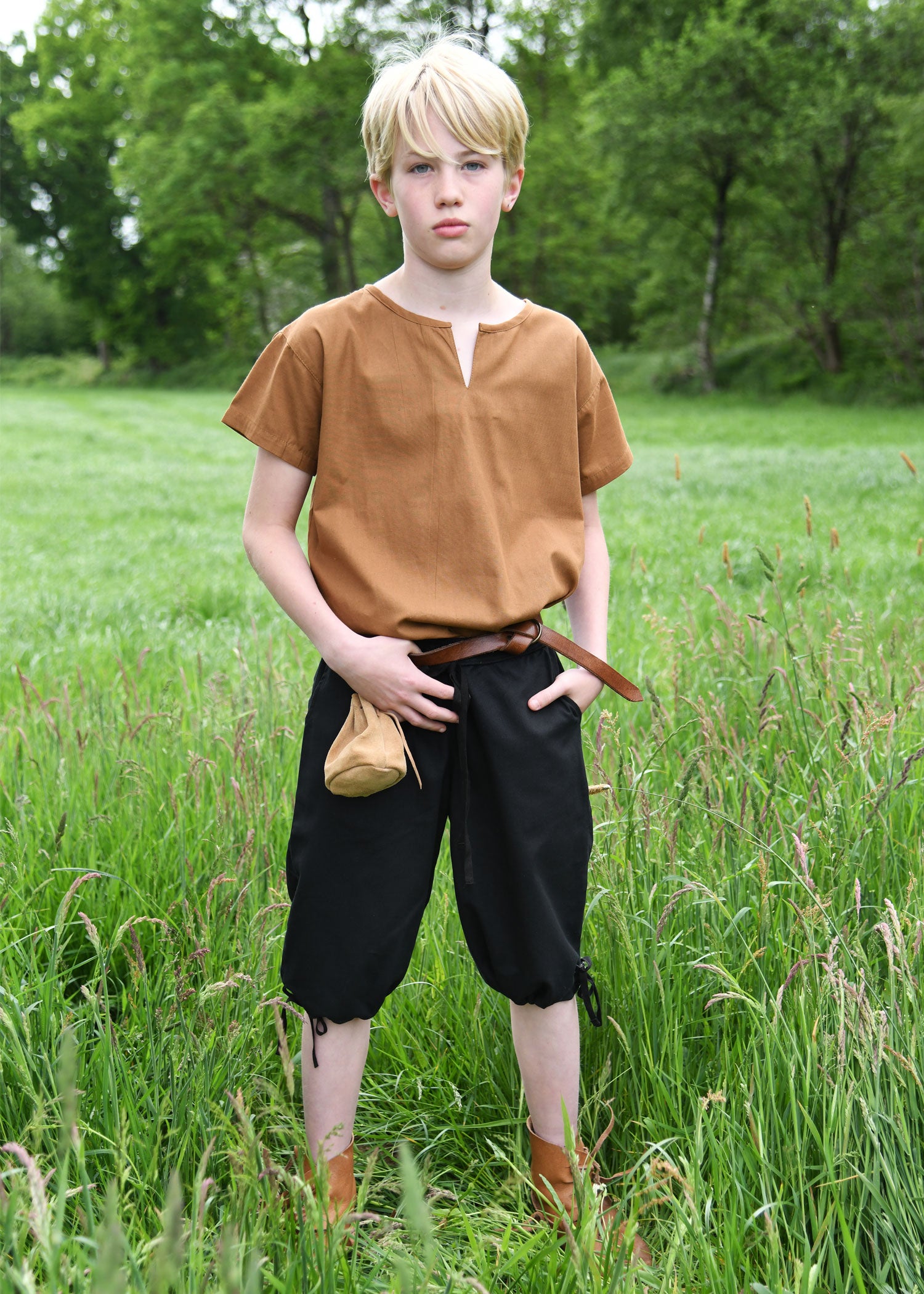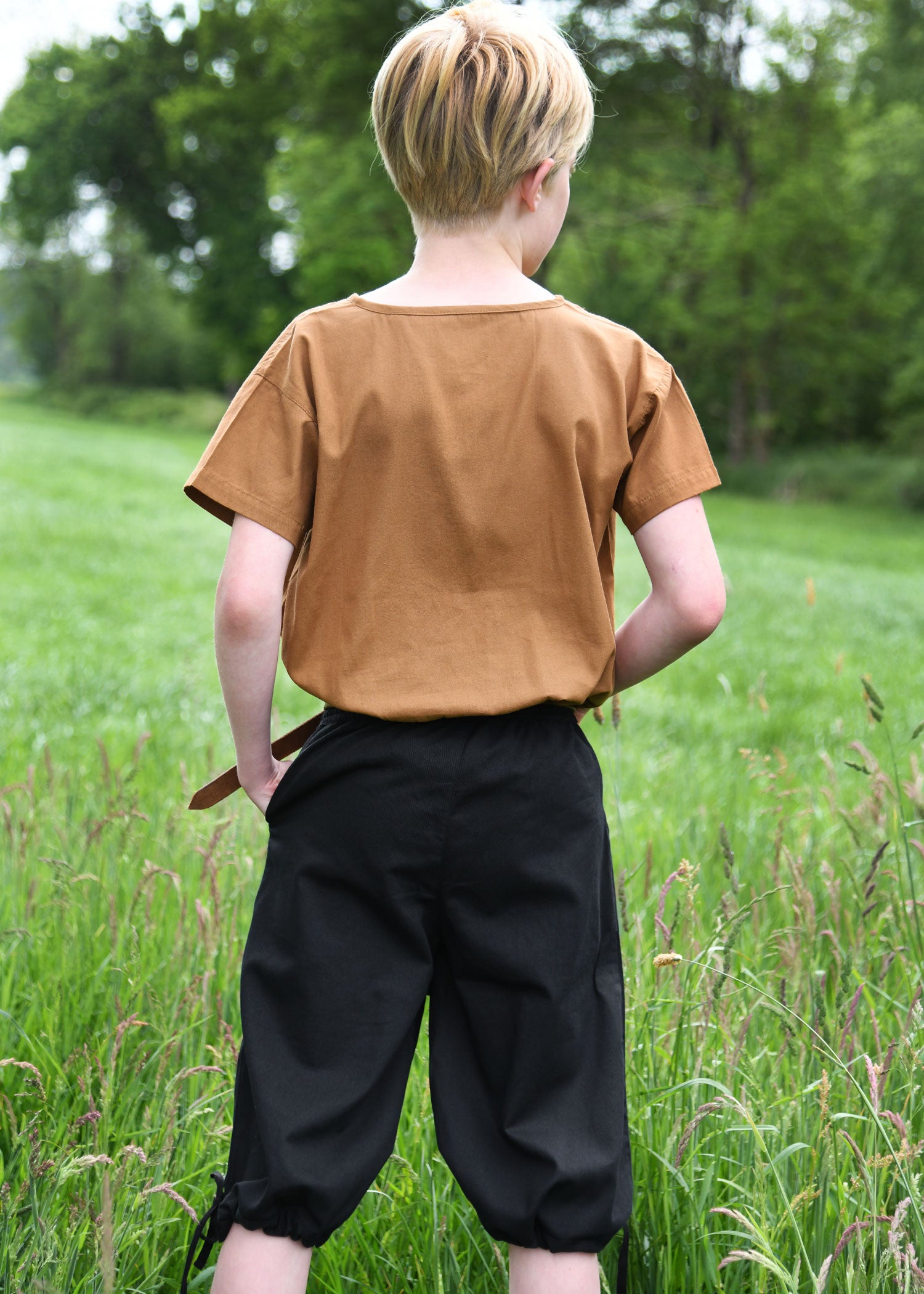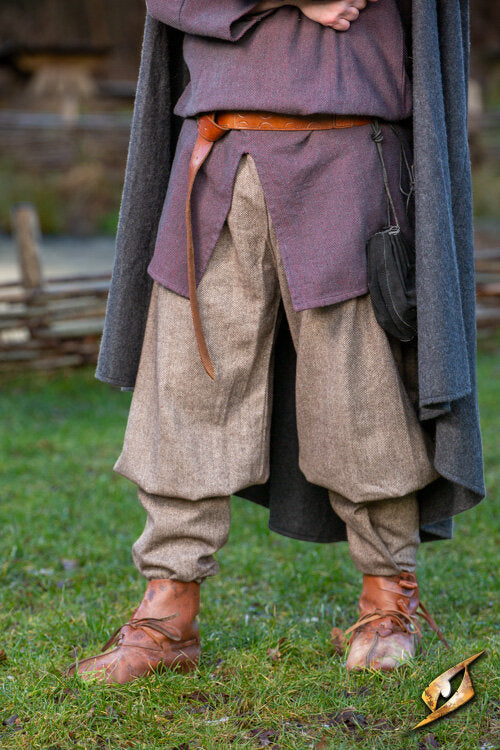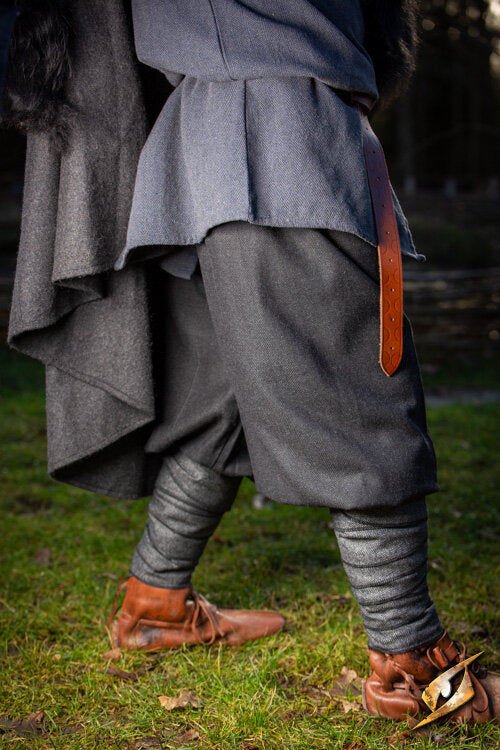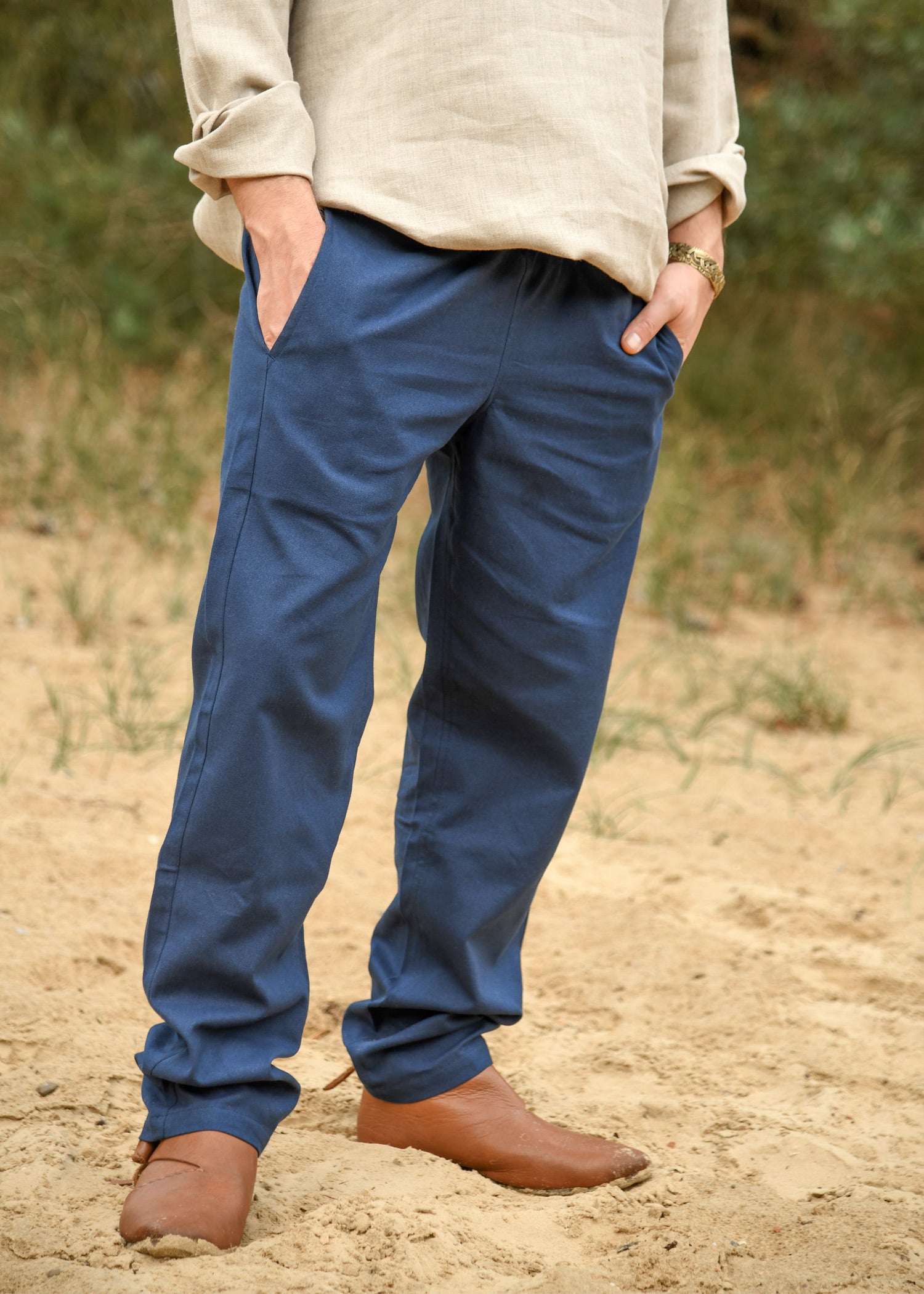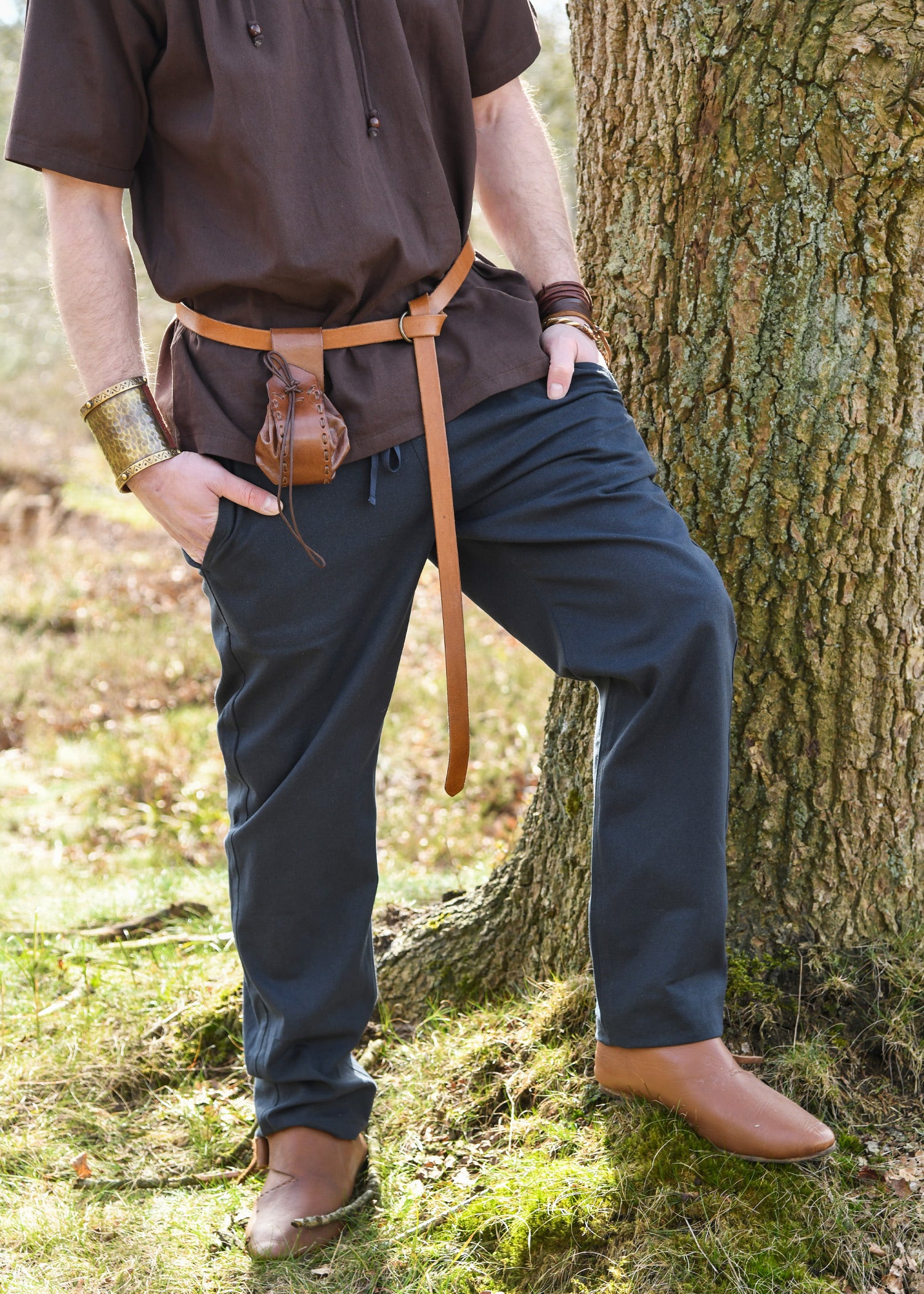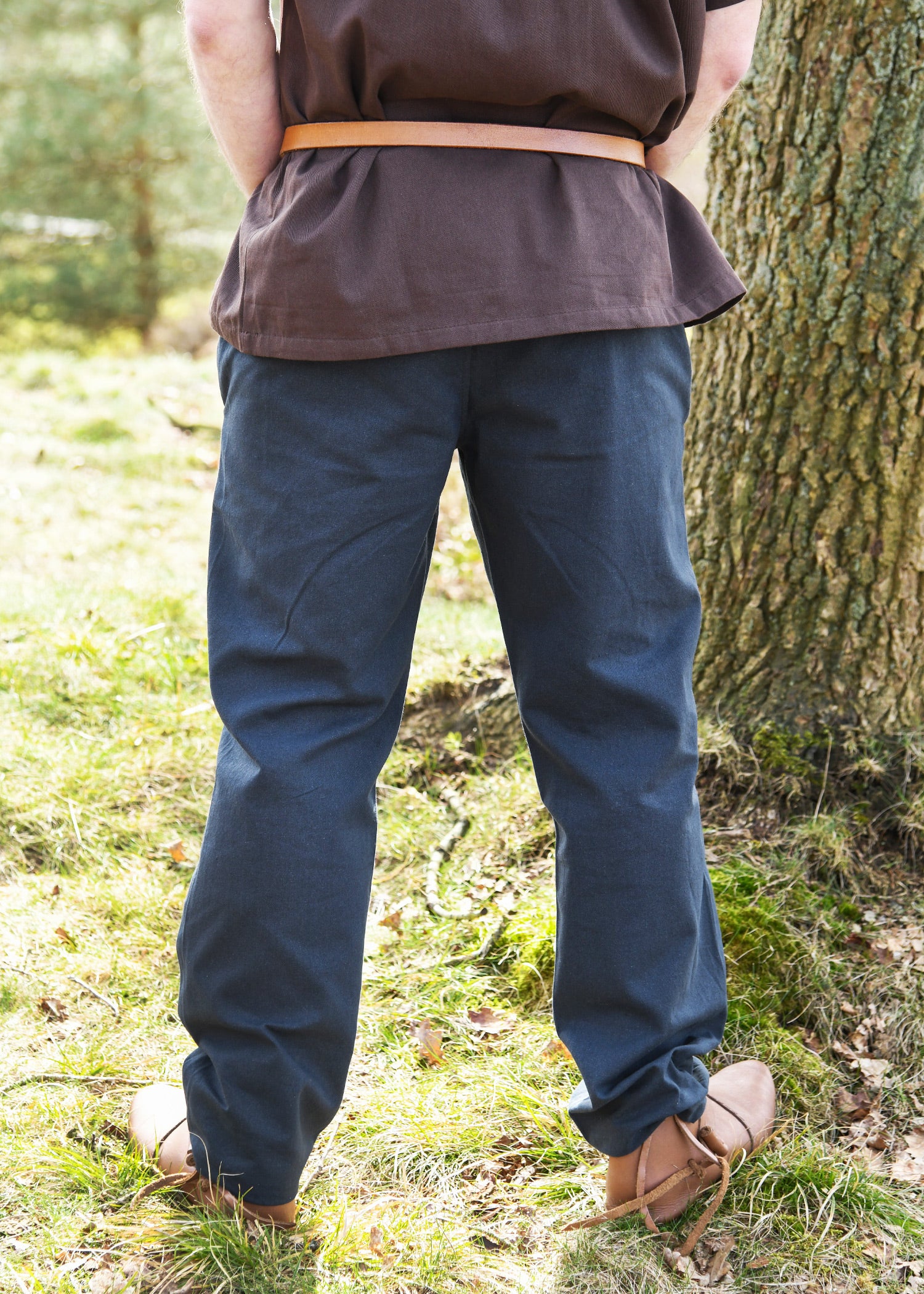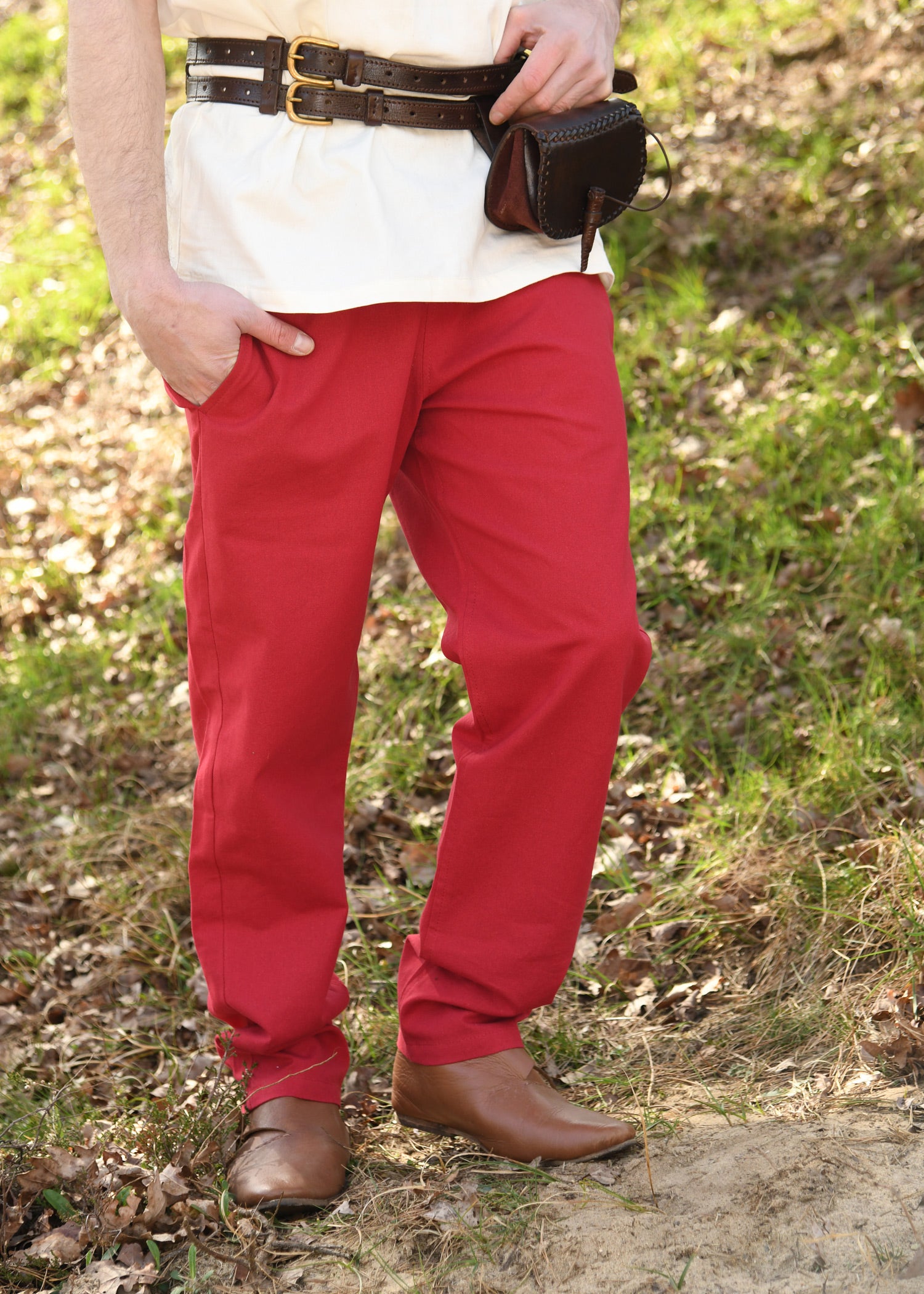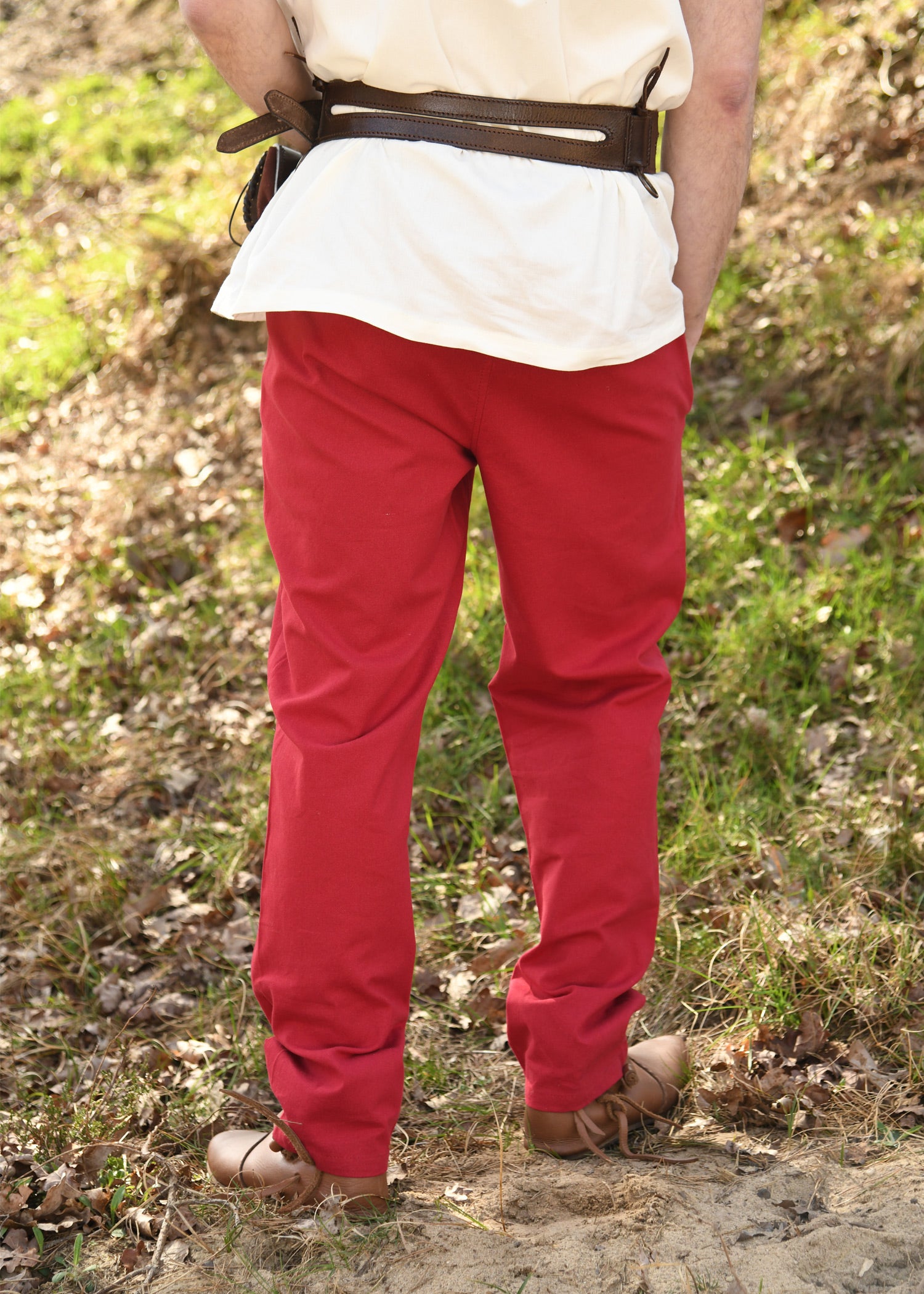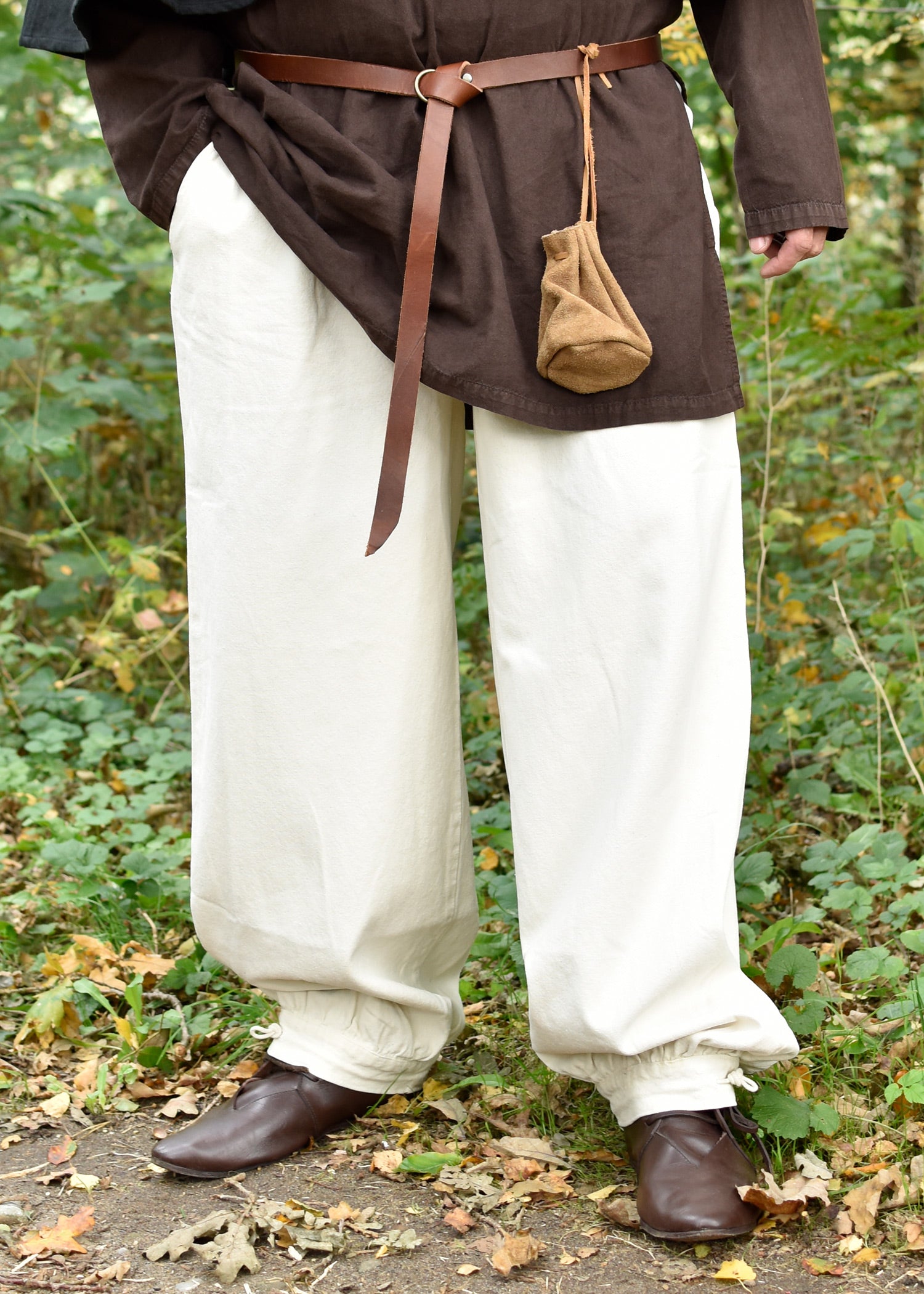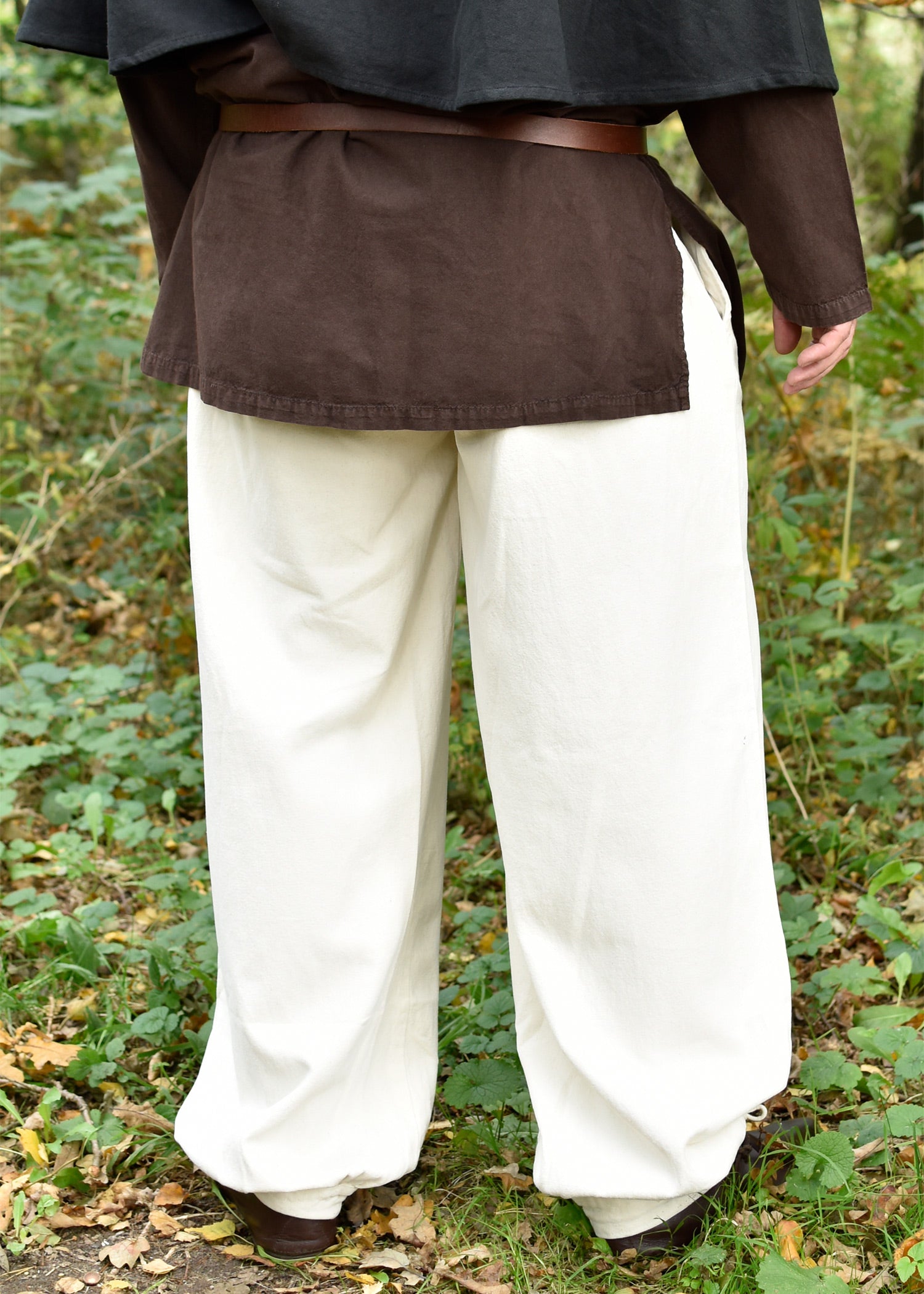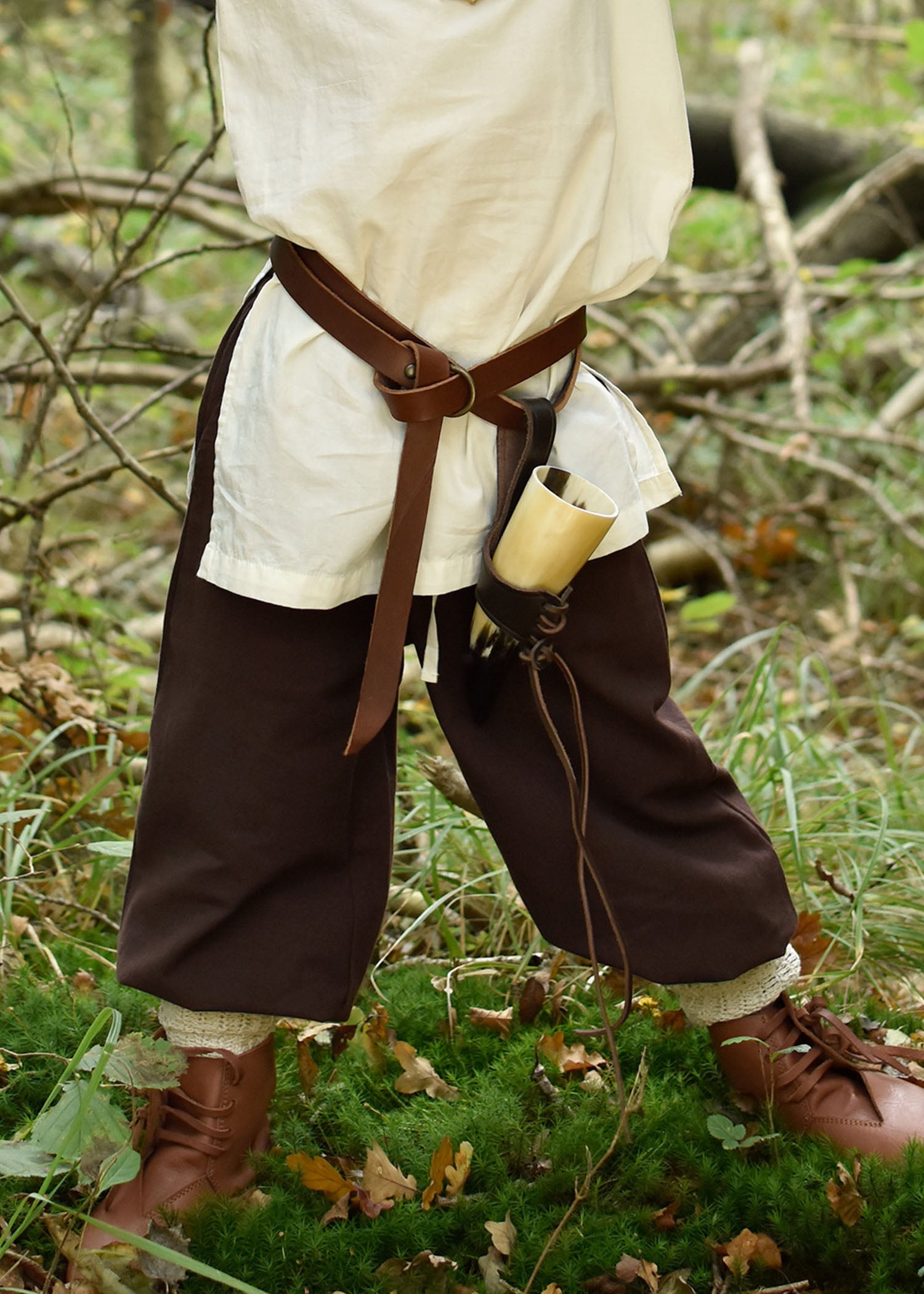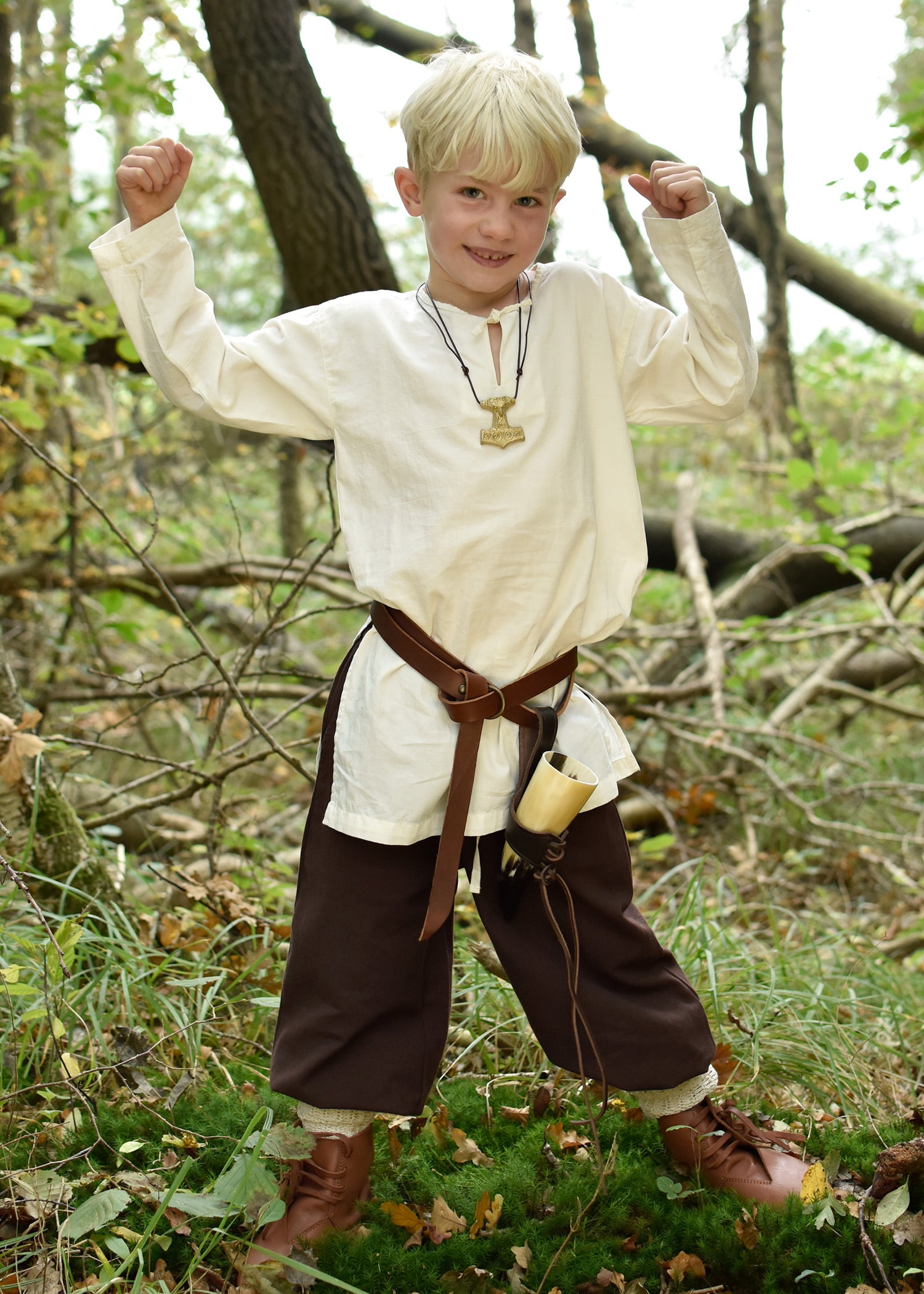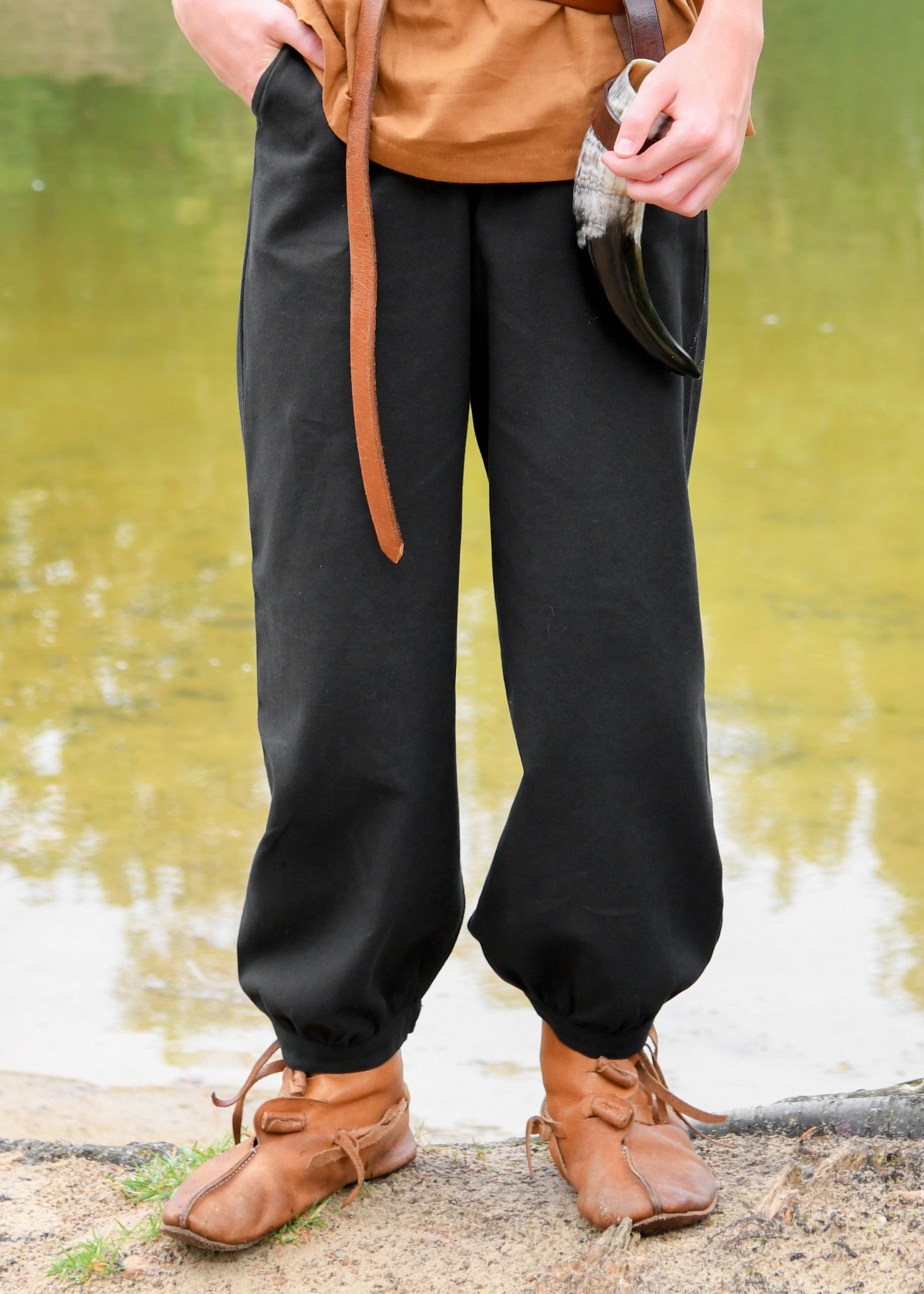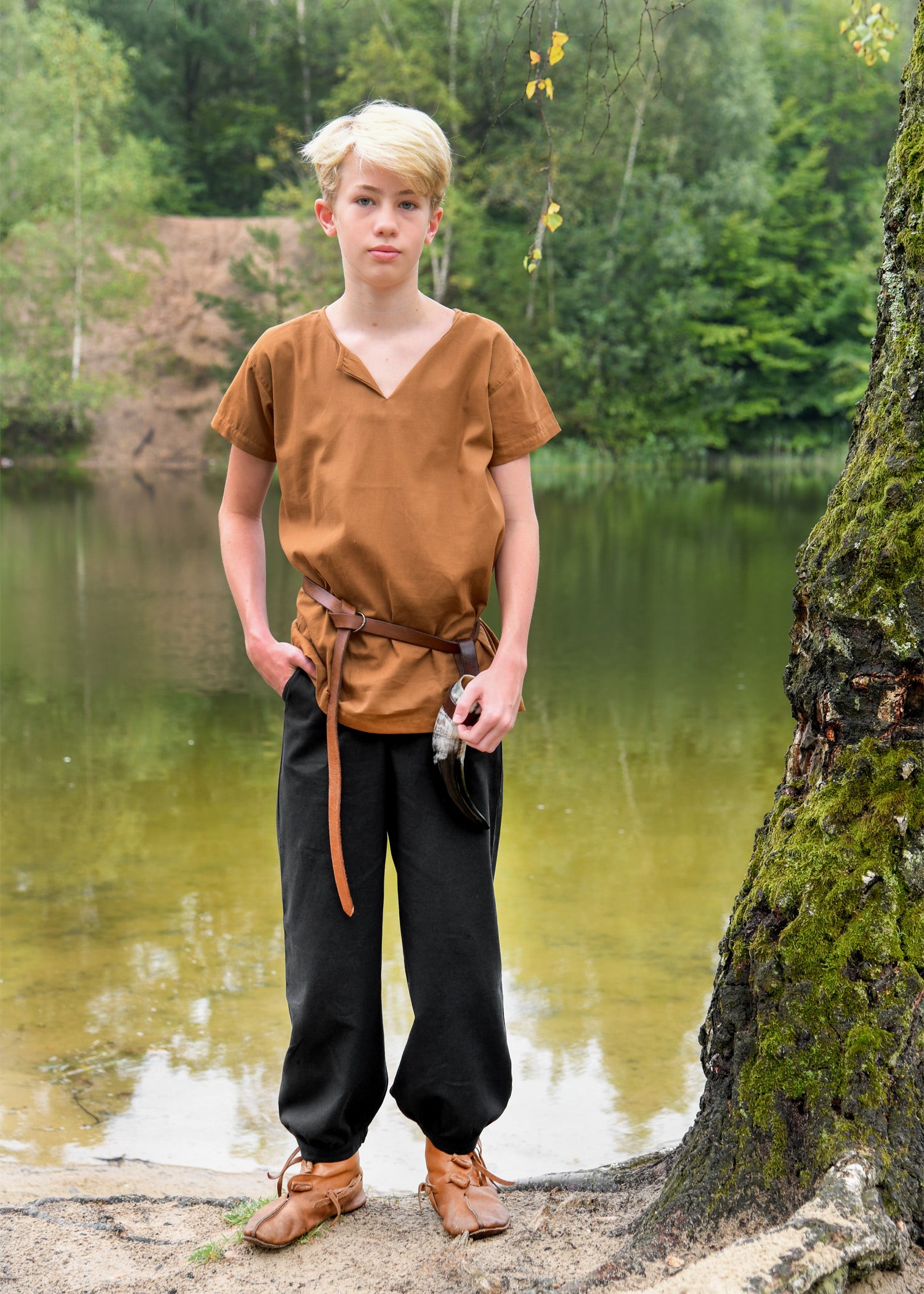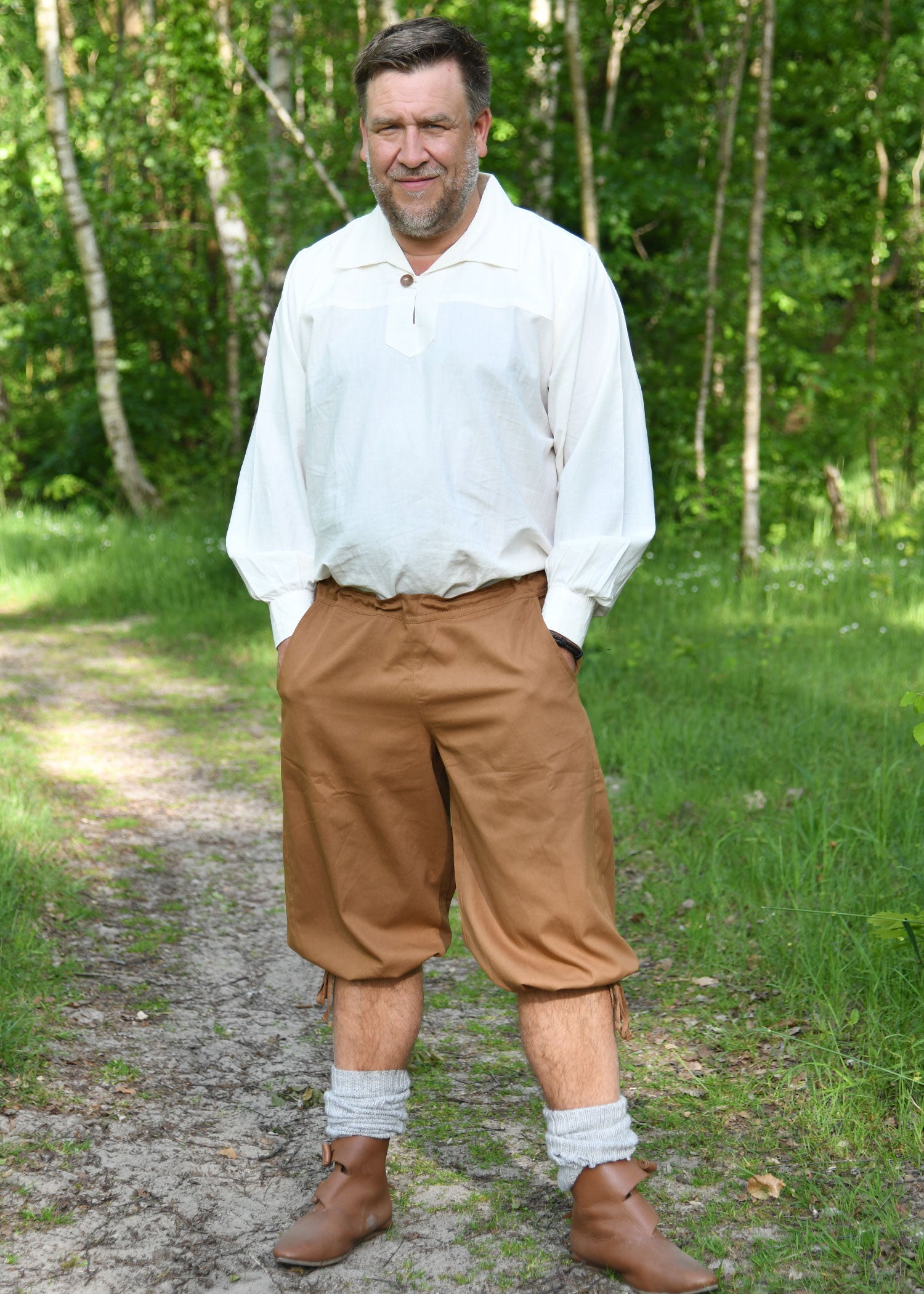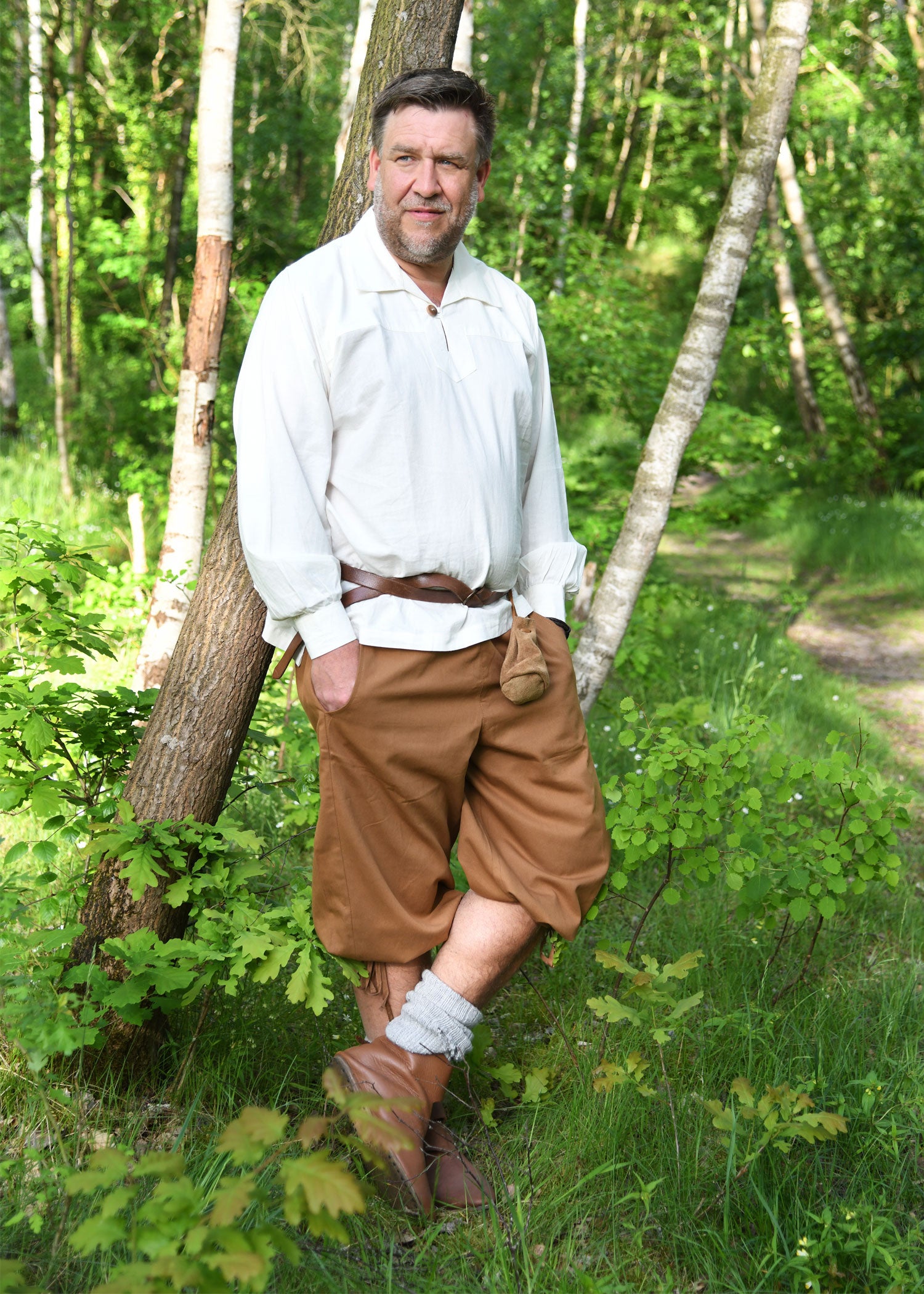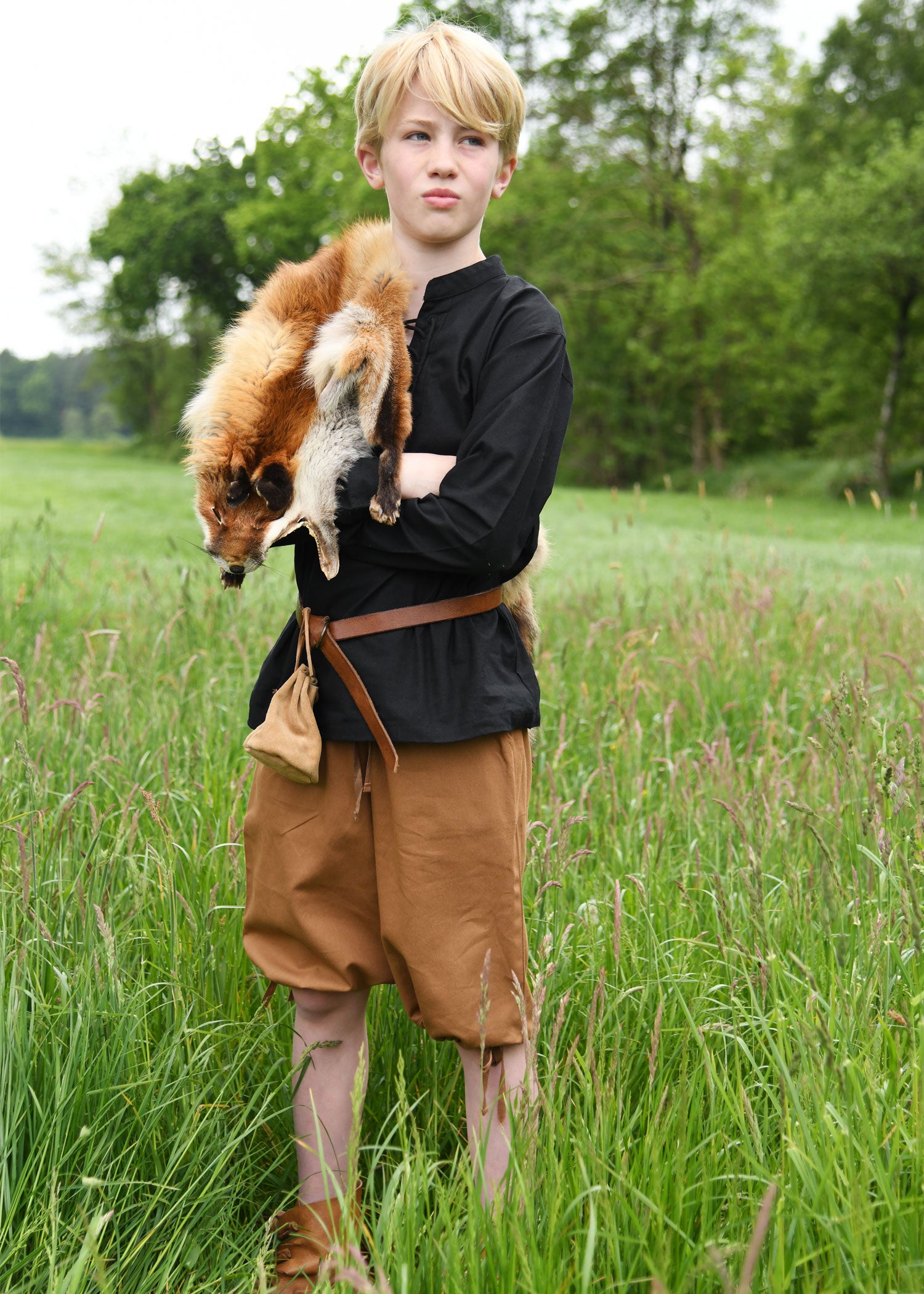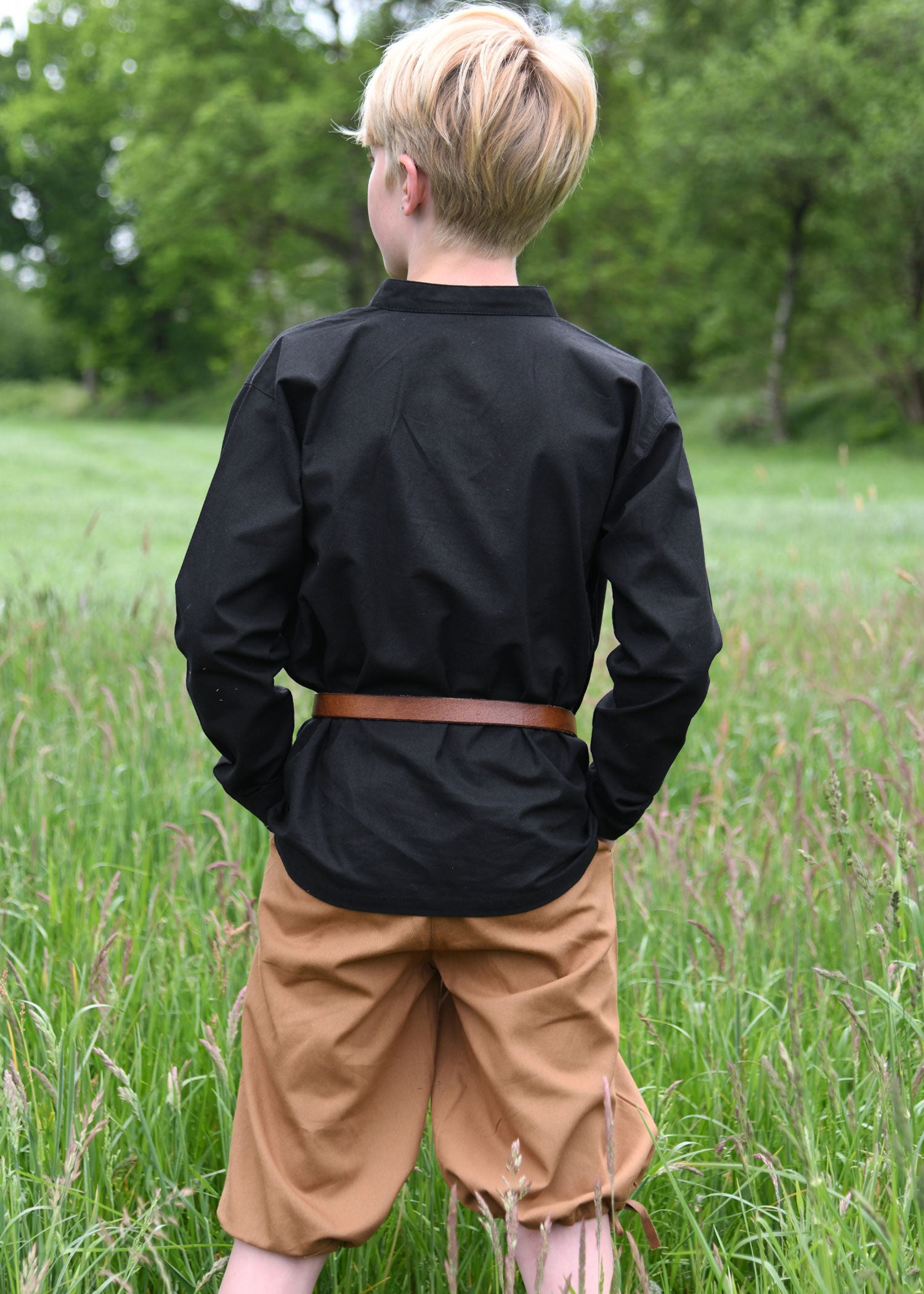Trousers of the Early Middle Ages: comfort and durability in medieval clothing
Early medieval trousers were a staple in the wardrobes of warriors, peasants, and nobles. Designed for mobility and durability , they varied in cut and materials depending on region and social status. From fitted styles for battle to loose-fitting versions for everyday wear, these trousers reflected the functionality and cultural identity of the period.
Main types of trousers from the High Middle Ages
- Braccae : Tight trousers of Germanic and Celtic origin, popular among Vikings and Normans.
- Medieval leggings : Worn by nobility and knights, they covered the legs down to the feet and were fastened with laces.
- Loose wool trousers : Common among peasants for their comfort and resistance to the cold.
- Battle trousers : Tighter and reinforced, they would allow better mobility in combat.
Characteristics of the trousers of the High Middle Ages
- Natural materials : Wool and linen were the most used for their durability and comfort.
- Slim or loose fit : Depending on the use, they could be tight for riding or loose for greater comfort.
- Adjustable waist with laces or belt : Allows for a personalized fit and greater support.
- Reinforcements in key areas : Ideal for combat and daily work.
Early medieval trousers were essential to medieval clothing, adapting to different needs and lifestyles. If you're looking for replicas of medieval trousers for historical reenactment, collecting, or authentic medieval attire , you'll find period-accurate models at Tienda Medieval .

